Native Seedlings of the Delaware Estuary
A guide to perennial and other herbaceous seedlings


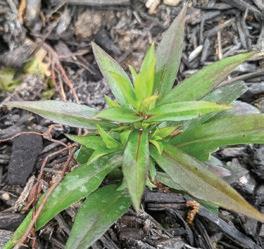

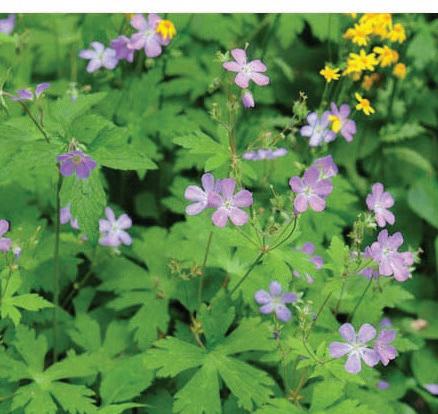

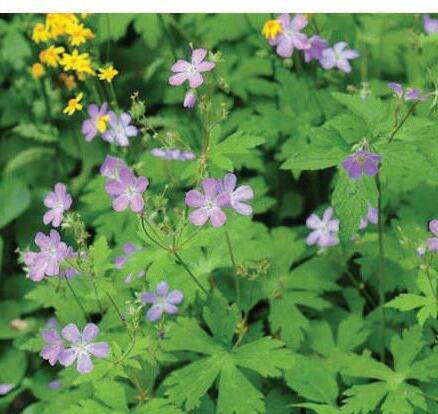
Made possible with support from:

How to Use this Guide Symbols
(“X” indicates feature is not applicable)
To help garden caretakers with weeding and maintenance, this guide was developed to assist in the identification of plants as seedlings. The guide is designed to be an easy to use reference tool for plants typically chosen for native plant gardens. The plant list is not exhaustive. If you would like to contribute photos of additional plants to be included in the guide or have any questions, please contact Sarah Bouboulis at sbouboulis@delawareestuary.org.
Each page contains the following information for each herbaceous perennial. This guide does not include shrubs or trees.
Water Requirements
Sun Requirements Full
Ecological Benefit
• Large photos of young plants
• Common and scientific names, plant family
• Important ID characteristics to distinguish the plant from other plants/weeds
• Water & sun requirements
• Ecological benefits
• Seasonal points interest (for adult plant; flowering, fall color, etc.)
• Photo of the plant in bloom
Birds, Nectar and/or seed
Pollinators, Bees & Butterflies
Season of Interest Spring
Pollinators & larval host
Dry Moist Wet
Sun Part Sun/Shade Shade
Summer Fall Winter
Contents by Common Name
American Sweet Flag. ............................................................ 7 Aster ‘Wood’s Blue’............................................................... 55 Asymmetrical Fringed Sedge. ................................................ 14 Autumn Sneezeweed. ............................................................. 25 Black-Eyed Susan. ................................................................. 45 Blue Flag Iris.......................................................................... 29 Blue Mistflower. ..................................................................... 17 Bluestem Goldenrod. ............................................................. 49 Blue Vervain........................................................................... 56 Boneset. .................................................................................. 21 Butterfly Weed. ...................................................................... 12 Cardinal Flower. ..................................................................... 34 Clustered Mountain Mint. ...................................................... 44 Common Milkweed. .............................................................. 13 Creeping Phlox....................................................................... 42 Fall Obedient Plant. ............................................................... 40 Fox Sedge............................................................................... 15 Golden Alexanders. ................................................................ 58 Gray Goldenrod. .................................................................... 50 Great Blue Lobelia. ................................................................ 35 Joe Pye Weed. ........................................................................ 22 Lance-leaf Tickseed. .............................................................. 18 Lavender Bee Balm................................................................ 38 Little Bluestem Grass. ............................................................ 47 New England Aster. ............................................................... 54 New York Aster. ..................................................................... 53 New York Ironweed. .............................................................. 57 Orange Coneflower. ............................................................... 46 Oxyeye Sunflower. ................................................................. 27 Pickerelweed. ......................................................................... 43 Pointed Blue-eyed Grass. ....................................................... 48 Purple Coneflower. ................................................................. 20 Pussy Toes. ............................................................................. 8 Scarlet Beebalm. .................................................................... 37 Soft Rush. ............................................................................... 31 Spicebush. .............................................................................. 33 Spike Gayfeather. ................................................................... 32 Spotted Bee Balm. ................................................................. 39 Swamp Milkweed. ................................................................. 11 Swamp Rose-Mallow. ............................................................ 28 Swamp Sunflower. ................................................................. 26 Sweet Goldenrod. ................................................................... 51 Thin Hairy Rough-Leaf Goldenrod. ...................................... 52 Turtlehead. ............................................................................. 16 Virginia Bluebells. ................................................................. 36 Virginia Sweetspire. ............................................................... 30 White Wood Aster. ................................................................. 23 Whorled Tickseed. ................................................................. 19 Wild Columbine. .................................................................... 9 Wild Geranium. ...................................................................... 24 Wild Ginger. ........................................................................... 10 Woodland Phlox. .................................................................... 41 3
Contents by Scientific Name
Acorus americanus................................................................. 7 Antennaria plantaginifolia. .................................................... 8 Aquilegia canadensis. ............................................................ 9 Asarum canadense. ................................................................ 10 Ascelpias incarnata. ............................................................... 11 Ascelpias tuberosa. ................................................................ 12 Asclepias syriaca. .................................................................. 13 Carex crinita. ......................................................................... 14 Carex vulpinoidea. ................................................................. 15 Chelone glabra....................................................................... 16 Conoclinium coelestinum. ...................................................... 17 Coreopsis lanceolata.............................................................. 18 Coreopsis verticillata. ............................................................ 19 Echinacea purpurea. .............................................................. 20 Eupatorium perfoliatum. ........................................................ 21 Eutrochium sp.. ...................................................................... 22 Eurybia divaricata. ................................................................ 23 Geranium maculatum............................................................. 24 Helenium autumnale. ............................................................. 25 Helianthus angustifolius. ....................................................... 26 Heliopsis helianthoides. ......................................................... 27 Hibiscus moscheutos. ............................................................. 28 Iris versicolor. ........................................................................ 29 Itea virginica. ......................................................................... 30 Juncus effusus. ....................................................................... 31 Liatris spicata. ....................................................................... 32 Lindera benzoin. .................................................................... 33 Lobelia cardinalis. ................................................................. 34 Lobelia siphilitica. ................................................................. 35 Mertensia virginica. ............................................................... 36 Monarda didyma ‘Jacob Cline’. ............................................ 37 Monarda fistulosa. ................................................................. 38 Monarda punctata. ................................................................. 39 Physostegia virginiana. .......................................................... 40 Phlox divaricata ‘Blue Moon’. .............................................. 41 Phlox subulata. ...................................................................... 42 Pontederia cordata. ............................................................... 43 Pycnanthemum muticum. ....................................................... 44 Rudbeckia hirta. ..................................................................... 45 Rudbeckia fulgida. ................................................................. 46 Schizachyrium scoparium. ..................................................... 47 Sisyrichium angustifolium. ..................................................... 48 Solidago caesia. ..................................................................... 49 Solidago nemoralis. ............................................................... 50 Solidago odora. ...................................................................... 51 Solidago rugosa. .................................................................... 52 Symphotrichium novi-belgii. .................................................. 53 Symphyotrichum (Aster) novae-angliae. ................................ 54 Symphyotrichum sp.. .............................................................. 55 Verbena hastata. ..................................................................... 56 Vernonia noveboracensis. ...................................................... 57 Zizia aurea. ............................................................................ 58 4
Glossary of Terms
• Alternate-single leaves at each node
• Basal-leaves that grow lowest on the stem or plant
• Coarse-rough texture or hair bristles
• Elongated-long and thin leaf; not divided into parts
• Elliptic-shaped like an ellipse; twice as long as it is broad and widest in the middle
• Evergreen-green leaves throughout the year
• Lance-shaped-narrow ended leaves that are sharp and pointed
Leaflet-not directly on the main plant stem or branch, but on a petiole/stem of a leaf
• Lobed-divided parts of a leaf; deeply indented margins
• Node/Joint-small swelling of a plant stem where leaves emerge
• Oblong-elongated shaped leaf with parallel sides
• Opposite-2 leaves attached at each node on opposite sides of the stem
• Ovate-wider at the base than the midpoint and tapers to the end
• Petiole-the stalk that joins a leaf to a stem
• Pierced-stem appears to puncture through base of leaves
• Perpendicular-leaves are at a 90 degree angle to stem
• Rosette-circular arrangement of leaves; usually nearest to the ground
• Serrate-edges of leaves have pointed/toothed notches
• Sheath-lower part of a leaf that surrounds the stem
• Spikelet- small spike of flowers in grasses and sedges
• Stout-sturdy, well-developed thick stem
• Succulent-thick, fleshy tissue adapted to hold water
• Taper-coming to a pointed end of a leaf
• Veined-appearance of the vascular tissue within the leaf; can be identified in various patterns
• Whorl-circular pattern of leaves, petals, sepals, or branches around a single point on a stem
5
Geographical Range
The plants shown in this guide are primarily native to the Delaware Estuary region. Some plants’ range may not overlap the Delaware Estuary region, but are still included, particularly if they are used frequently in native gardening.
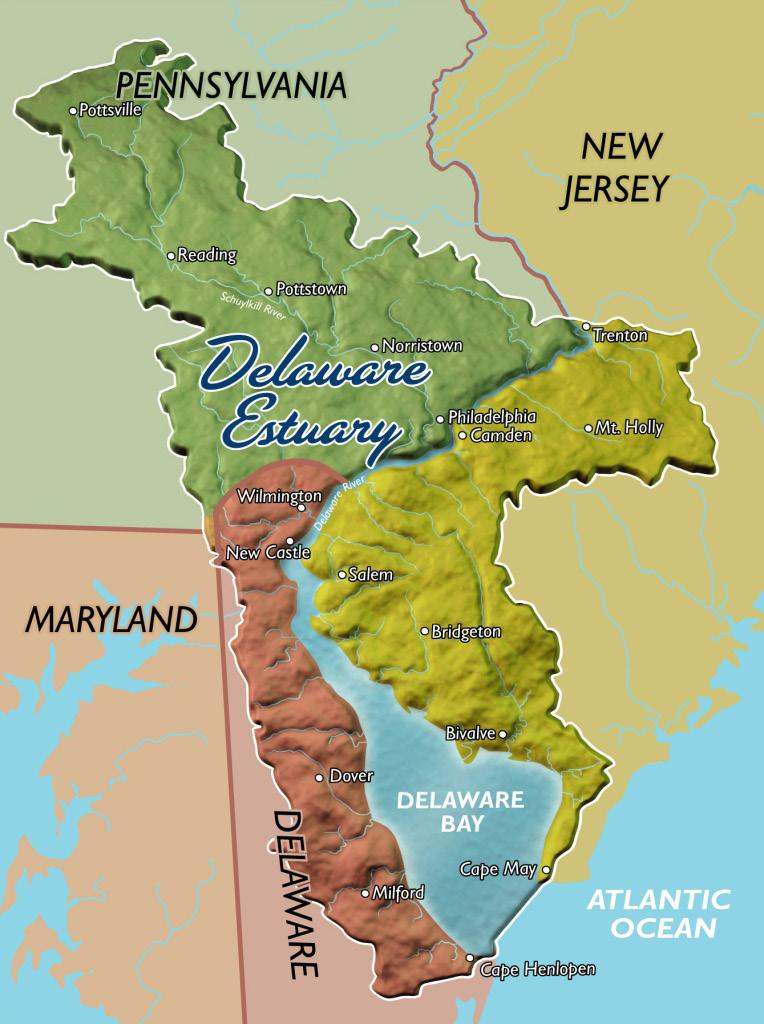
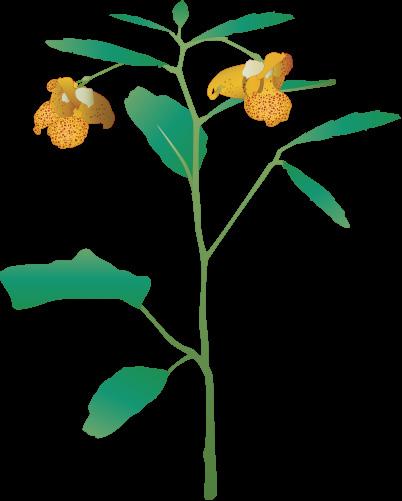
Photographs
All un-attributed photos were taken by Sarah Bouboulis, Habitat Project Coordinator, Partnership for the Delaware Estuary. Unless otherwise noted, all attributed photos were taken, with permission, from the Lady Bird Johnson Wildflower Center database. Special thanks to Pinelands Nursery & Supply for allowing us to photograph their plants.
Basic Plant Anatomy
Stem
Petiole
Node
Leaf
Lateral shoot
Flower
6
American Sweet Flag
Acorus americanus
Plant Information

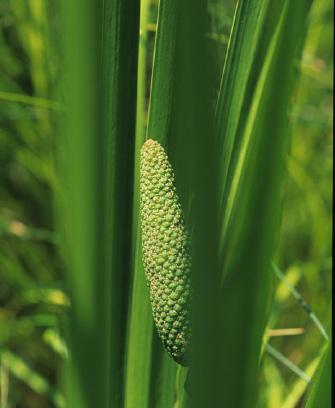
• Sword-shaped leaves
• Citrus-spicy aroma
• Leaves have crimped edges
• Can be confused with Iris
Garden Specs
7
Acoraceae
X
Photo by Sally and Andy Wasowski
Pussy Toes
Antennaria plantaginifolia
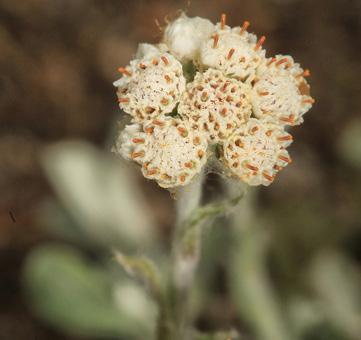
Plant Information
• Pale green-gray leaves, textured
• Low growing ground cover
• Flowers are unremarkable in the spring
Asteraceae
Garden Specs

8
Photo: Alan Cressler
Wild Columbine

Aquilegia canadensis

Plant Information
• “Clover” like in appearance
• Leaves deeply lobed and in groups of three
• Attracts hummingbirds
Garden Specs
9
Ranunculaceae
Photo: Stephanie Brundage
Wild Ginger
Asarum canadense
Plant Information
• Large heart shaped leaves
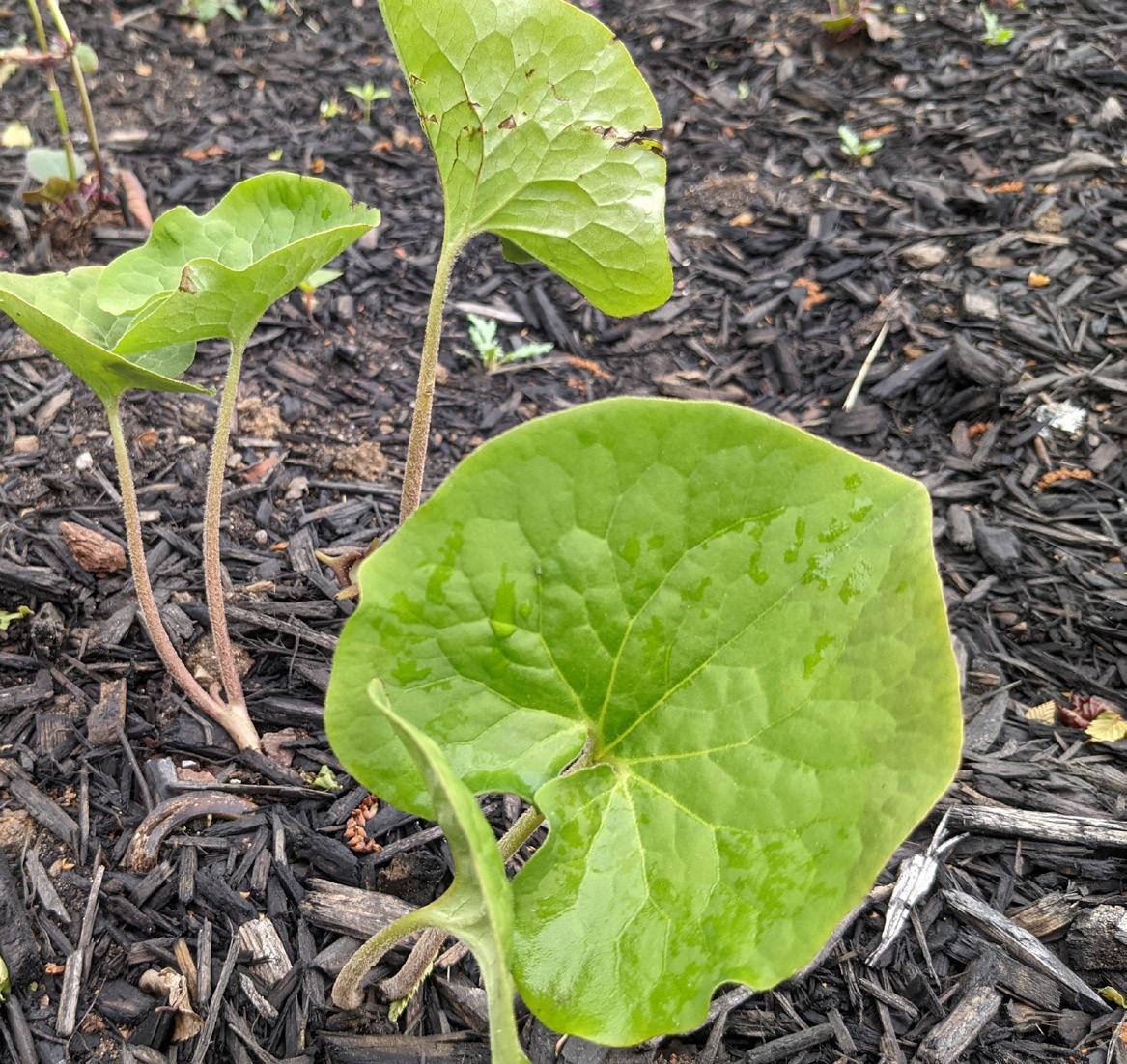
• Usually two leaves per plant
• Can create large colonies for ground cover
Garden Specs
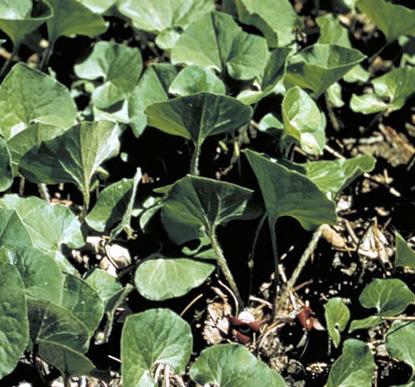
10
Aristolochiaceae
Photo: Albert Vick
Swamp Milkweed
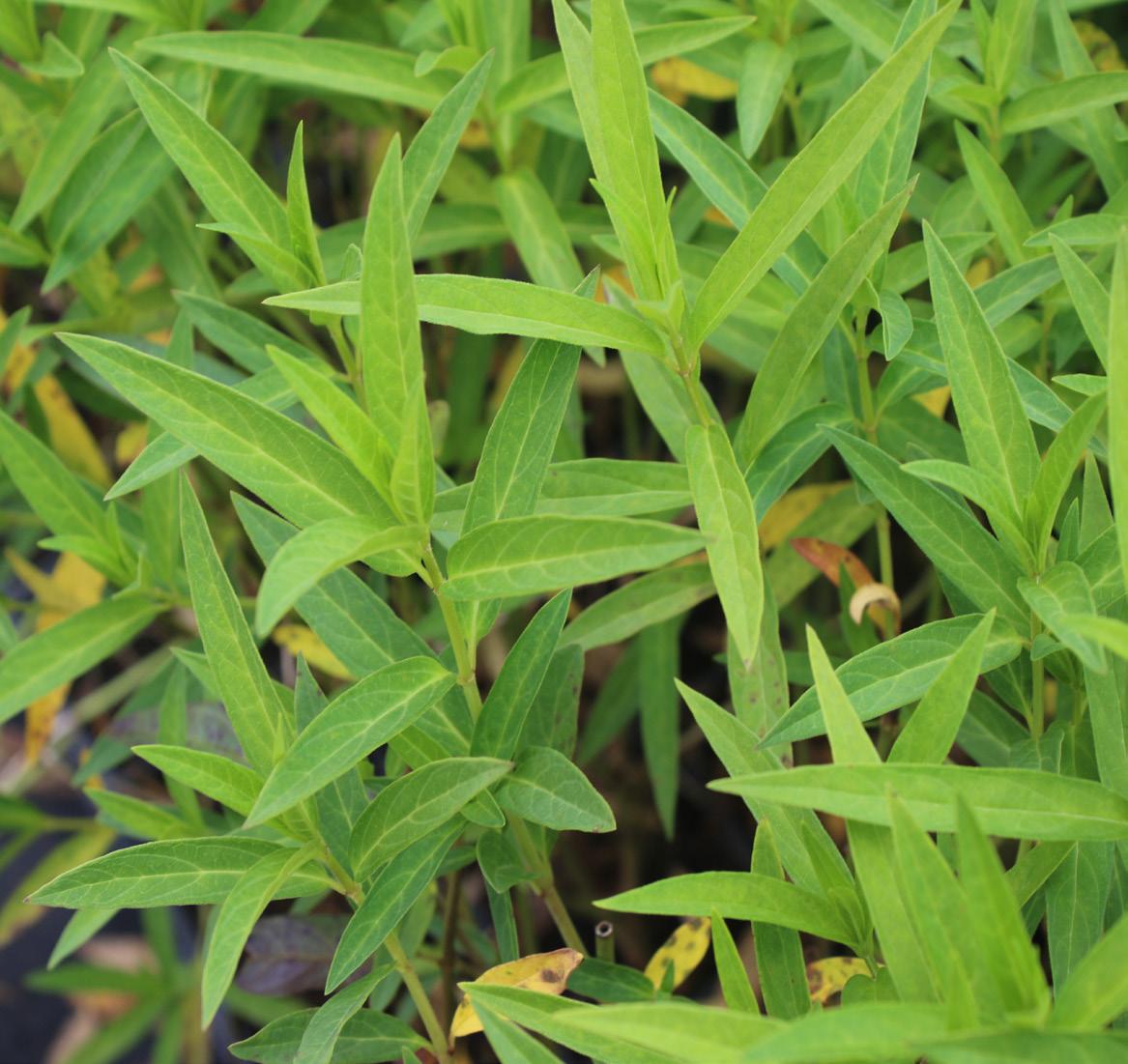

Ascelpias incarnata
Plant Information
• Lance-shaped leaves
• Milky sap when stems broken
• Vanilla aroma
Apocynaceae
Garden Specs
11
Photo by Sally and Andy Wasowski
Butterfly Weed

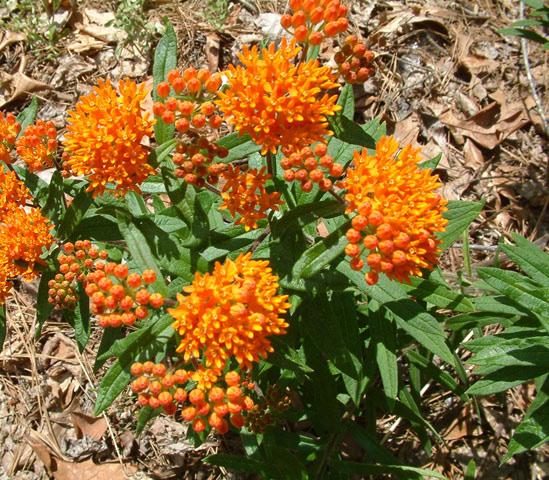
Ascelpias tuberosa
Plant Information
• Very late to emerge in spring
• Milky sap in leaves and stem
• Monarch host plant
Apocynaceae
Garden Specs
12
Photo: Stefan Bloodworth
Common Milkweed
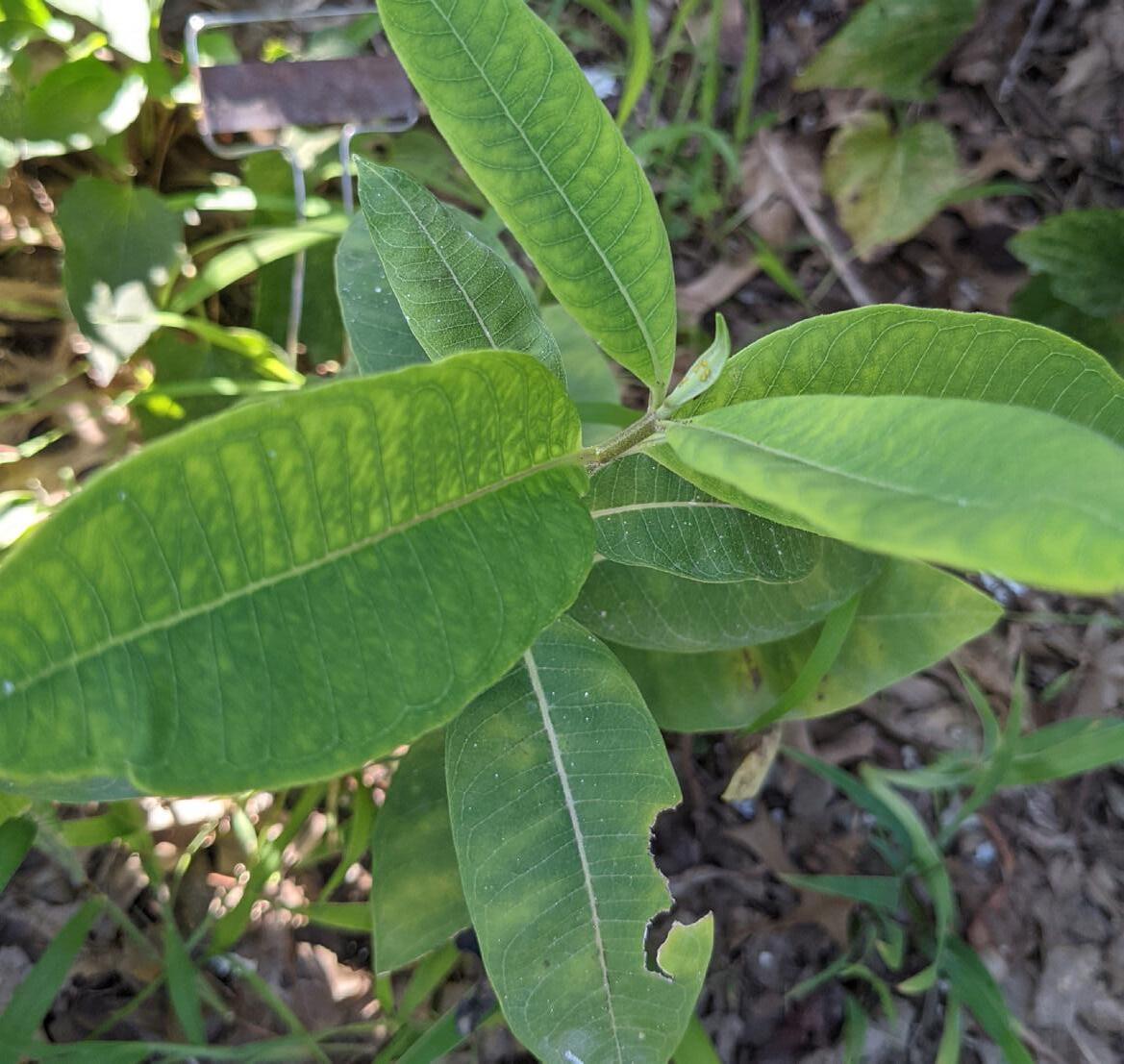
Asclepias syriaca
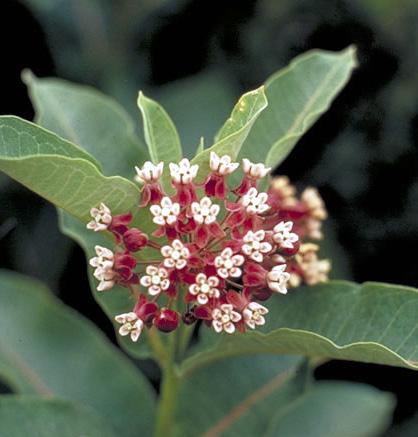
Plant Information
• Opposite, oblongshaped leaves
• Leaf pairs perpendicular with short stalks
• Gray/downy leaf underside
Apocynaceae
Garden Specs
13
Photo by Albert F. W. Vick
Asymmetrical Fringed Sedge

Carex crinita
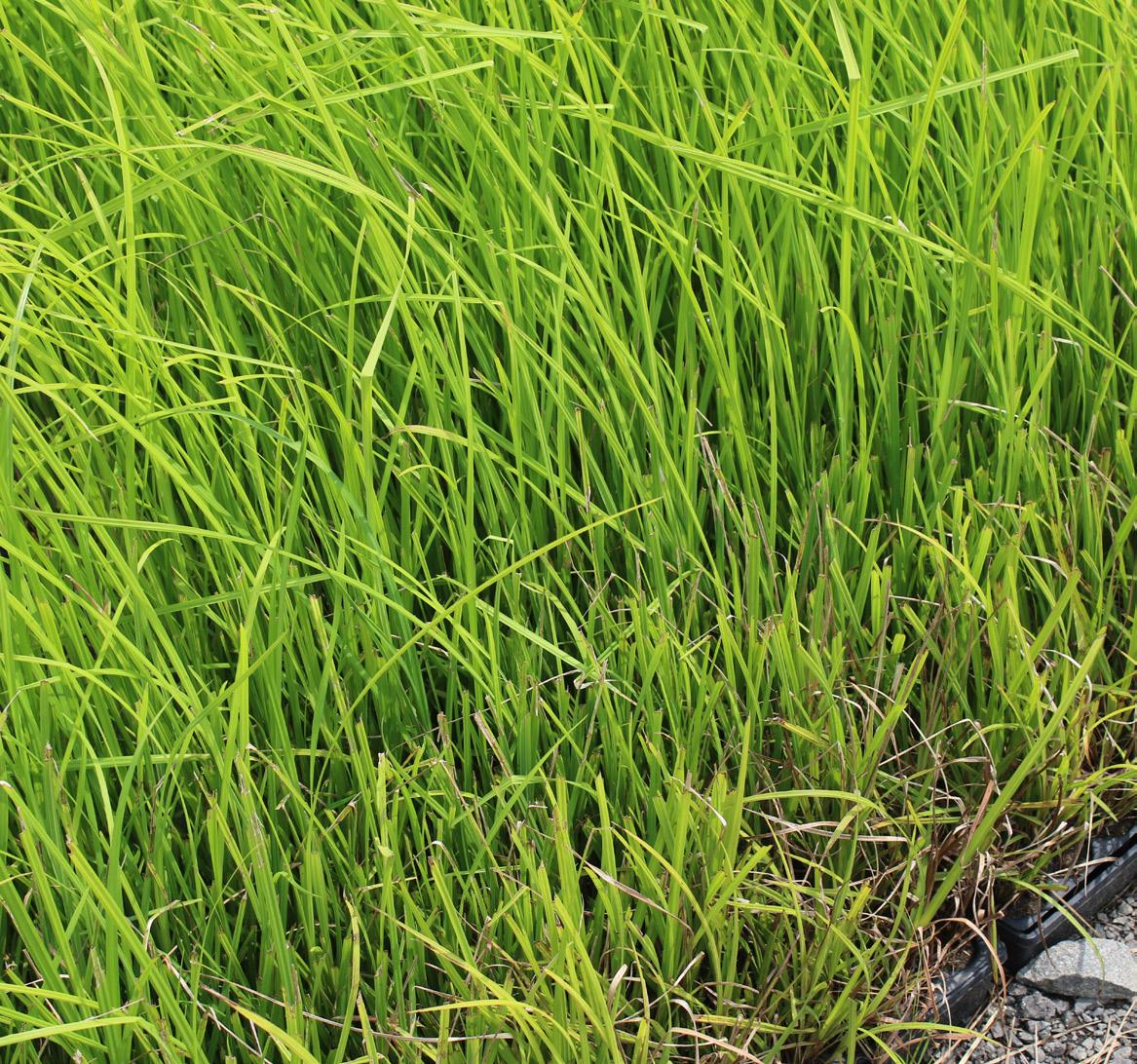
Plant Information
• Drooping, narrow green-tan spikelets
• Light green 3-angled clumps
• 3-6 glossy leaves per clump
Cyperaceae
Garden Specs
14
Fox Sedge
Carex vulpinoidea
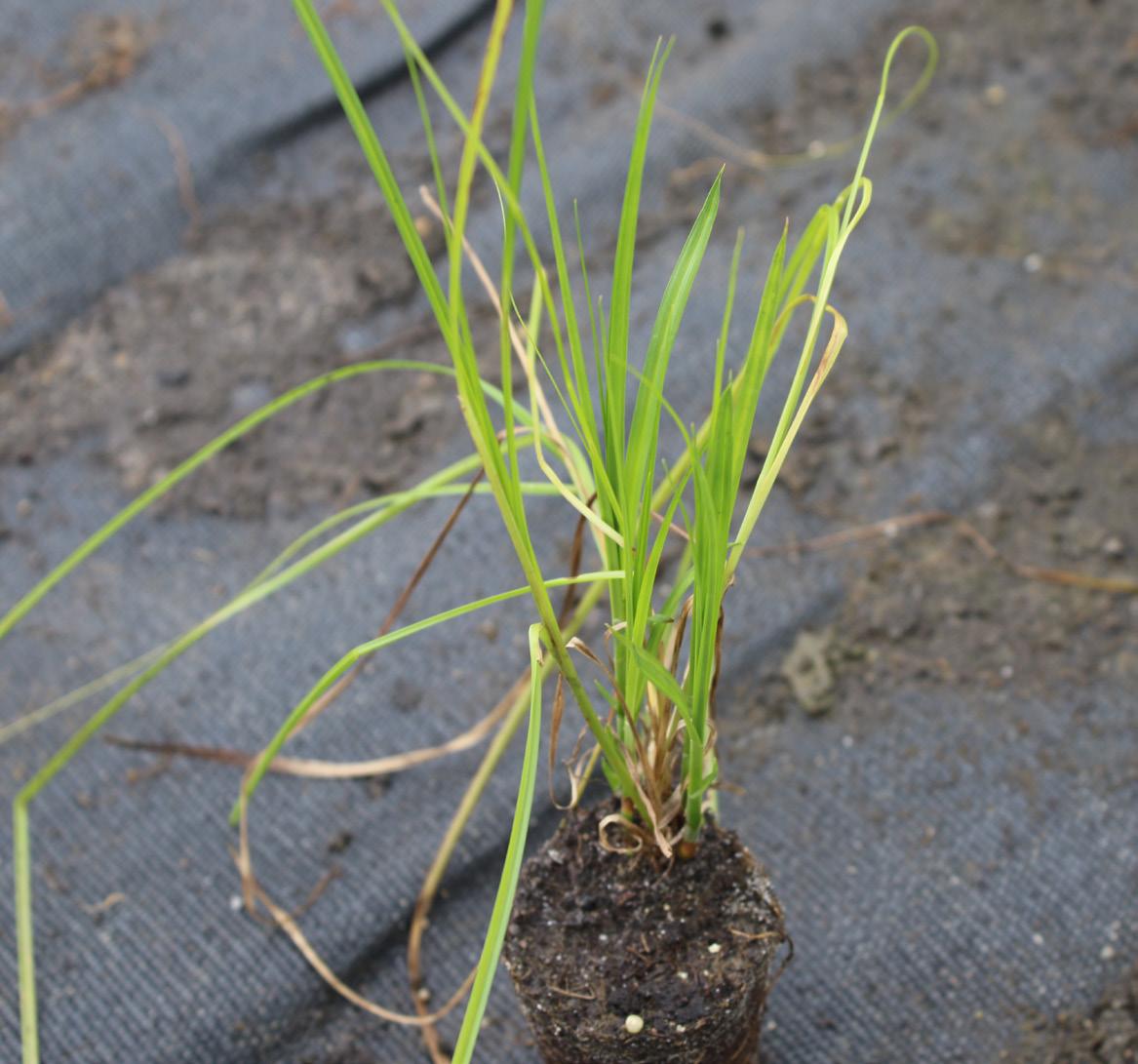
Plant Information
• Firm, slender 3-sided stems
• Grass-like leaf sheaths that cross-wrinkle

• Many Carex species look similar
Cyperaceae
Garden Specs
15
Photo by James L. Reveal
Turtlehead
Chelone glabra

Plant Information
• Elongated, lanceshaped leaves

• Leaves finely toothed
• Leaves opposite of each other
Plantaginaceae
Garden Specs
16
Photo by Stefan Bloodworth
Photo by: R. Parker, Finger Lakes Native Plant Society
Blue Mistflower
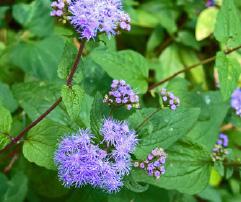
Conoclinium coelestinum
Plant Information
• Opposing, largetoothed triangular leaves
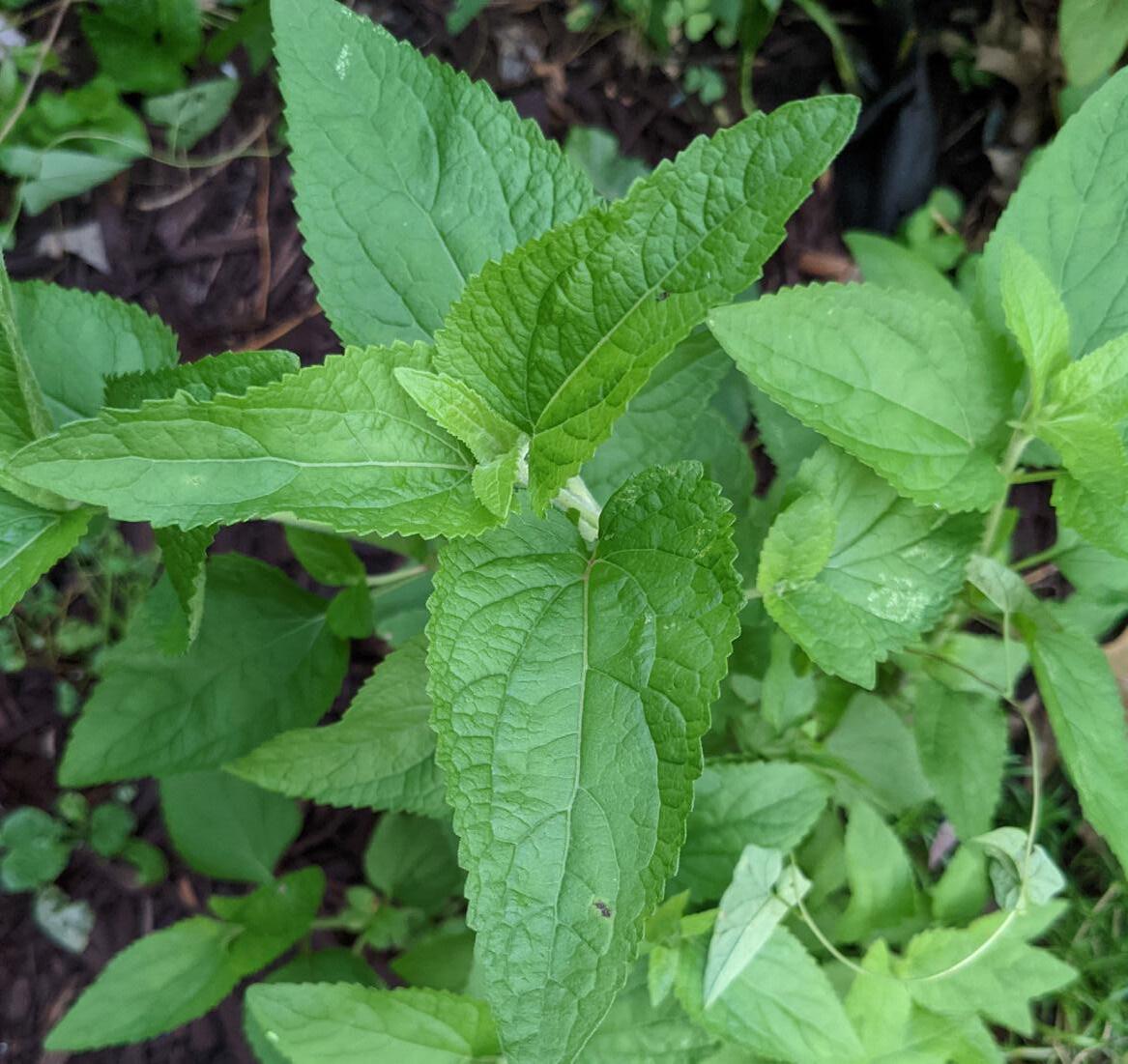
• Leaves on long stalks
• Young leaves light green
Asteraceae
Garden Specs
17
Photo by Stephanie Brundage
Lance-leaf Tickseed
Coreopsis lanceolata
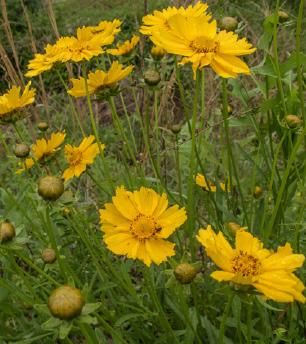
Plant Information
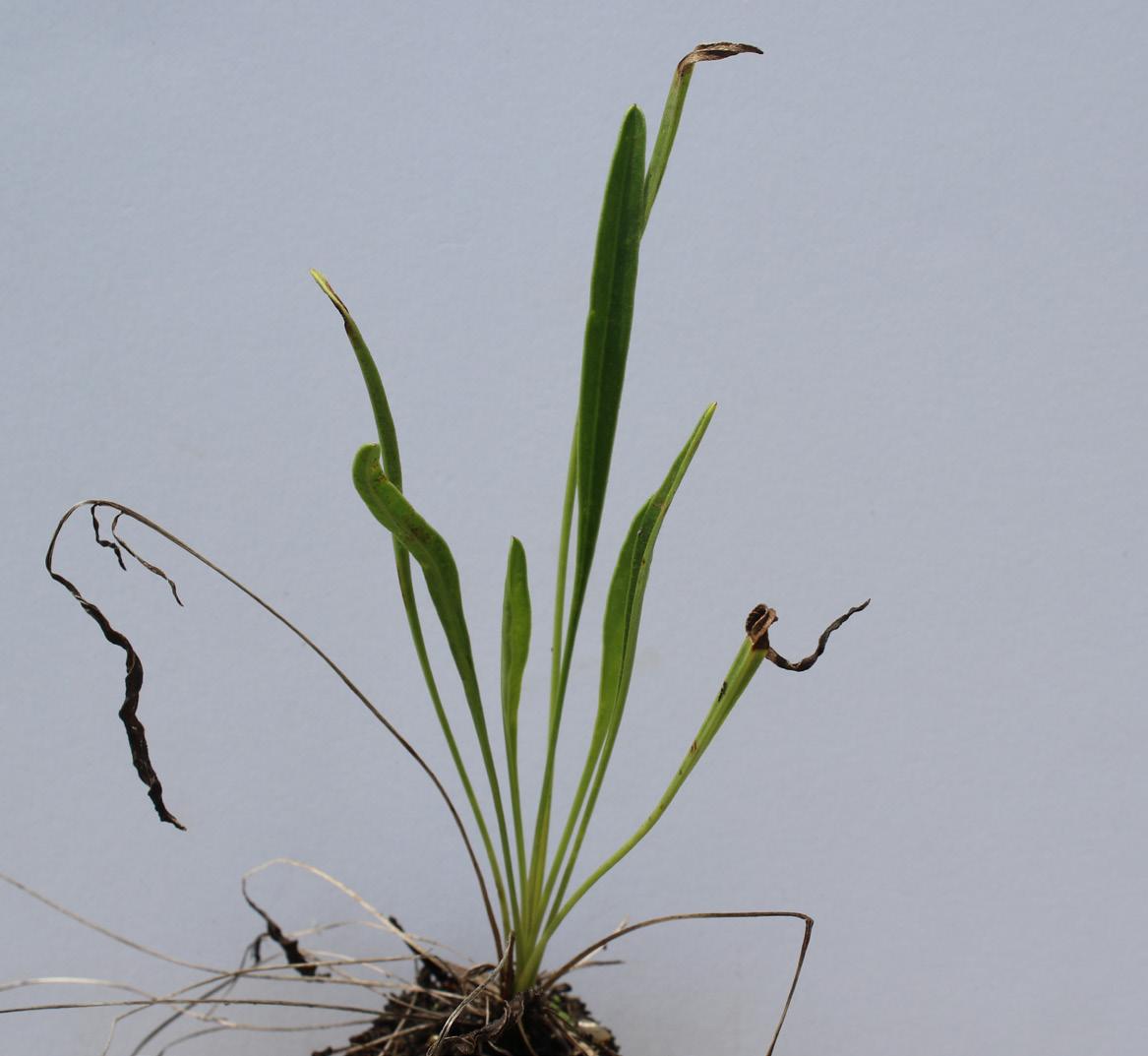
• Alternating lanceshaped leaves
• Upper leaves ovalshaped
• Leaves often lobed at the base
Asteraceae
Garden Specs
18
Photo by Stephanie Brundage
Whorled Tickseed
Coreopsis verticillata
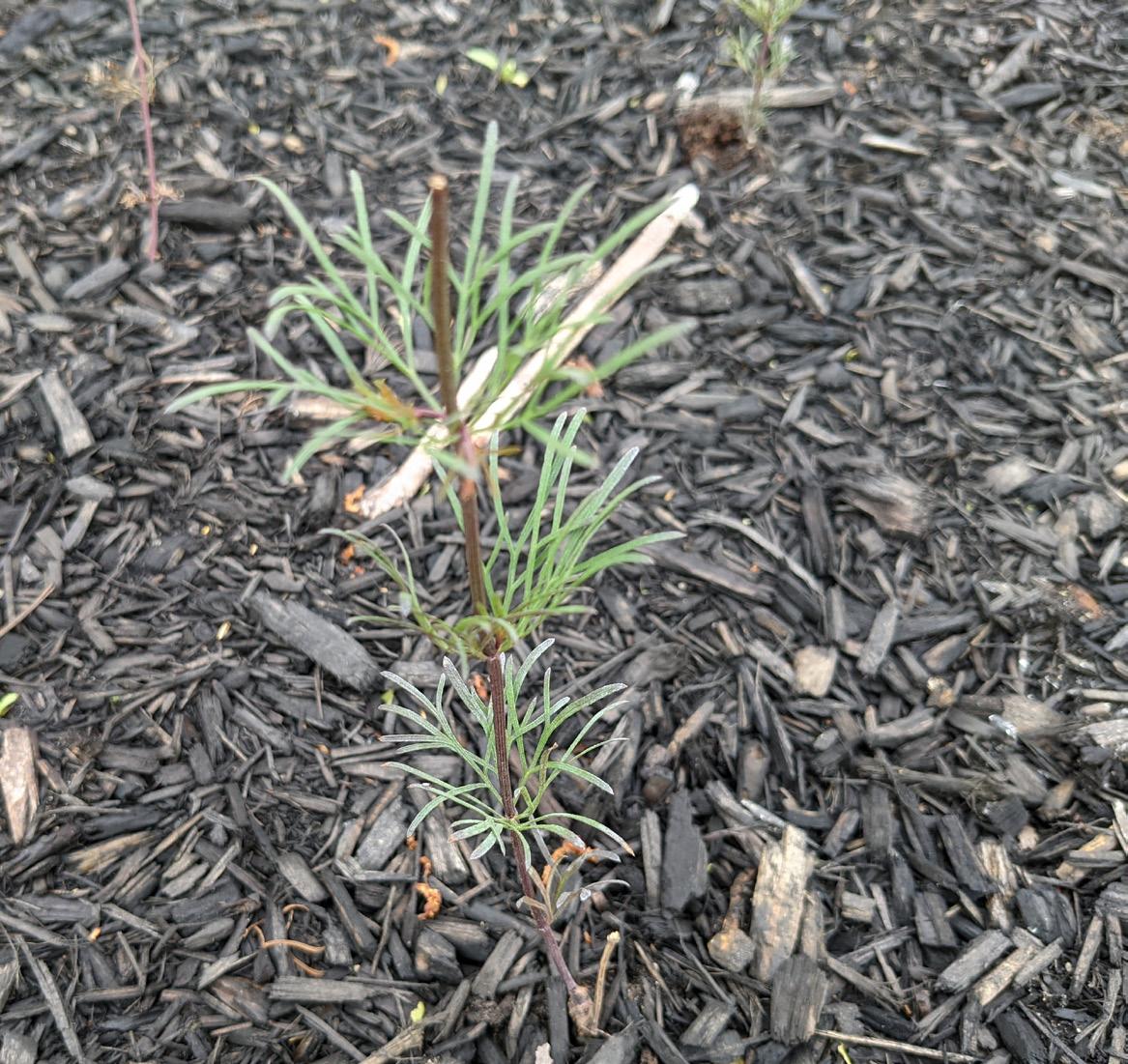
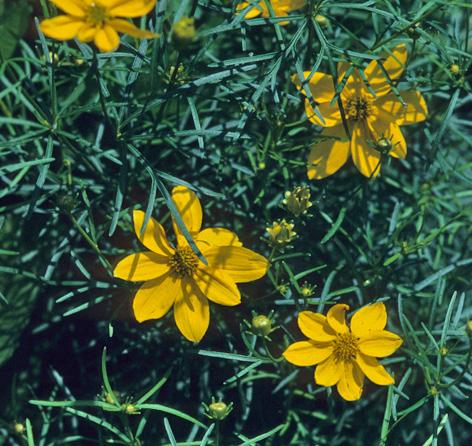
Plant Information
• Distinctive thread-like leaves
• Leaves create “whorls” around the main stem
Garden Specs
19
Asteraceae
Photo: Sally and Andy Wasowski
Purple Coneflower
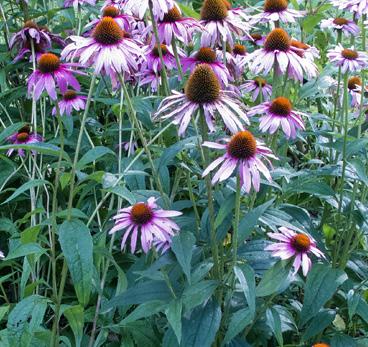
Echinacea purpurea
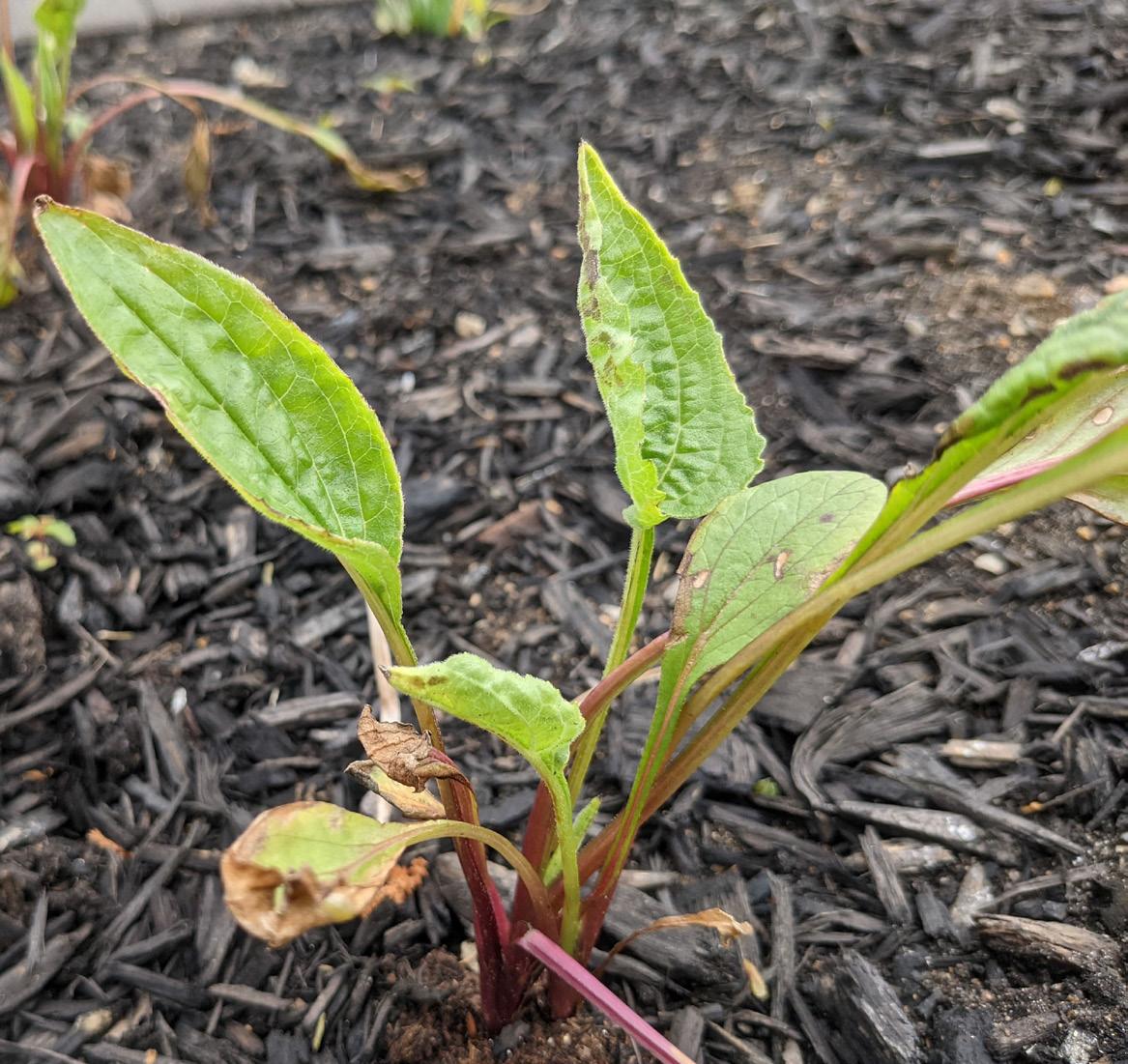
Plant Information
• Lower leaves are eggshaped
• Leaves thin out as the plant grows taller
• Rough texture to leaves
Garden Specs
20
Asteraceae
Photo: Stephanie Brundage
Boneset
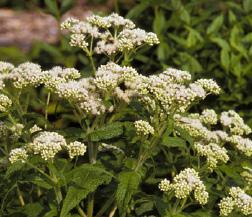
Eupatorium perfoliatum
Plant Information

• Stem appears pierced through the leaves
• No leaf stalk
• Hairy stem
• Tapered leaves
Garden Specs
21
Asteraceae
Photo by Sally and Andy Wasowksi
Joe Pye Weed
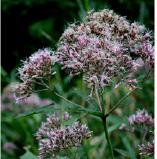
Eutrochium sp.
Plant Information
• Lance-shaped leaves whorled around tall stem

• Stem spotted or purple at joints
Asteraceae
Garden Specs
22
Photo by R. W. Smith
White Wood Aster
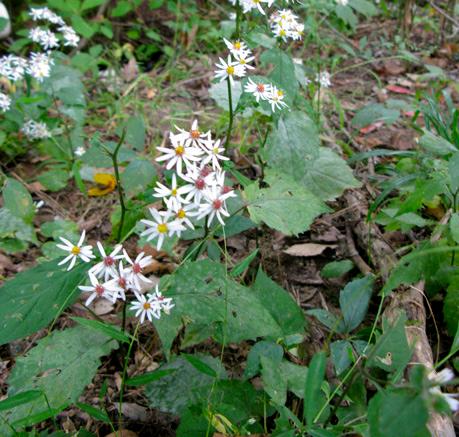
Eurybia divaricata
Plant Information
• Larger heart-shaped, coarsely toothed leaves near base of plant
• Smaller leaves near top as plant grows
Garden Specs
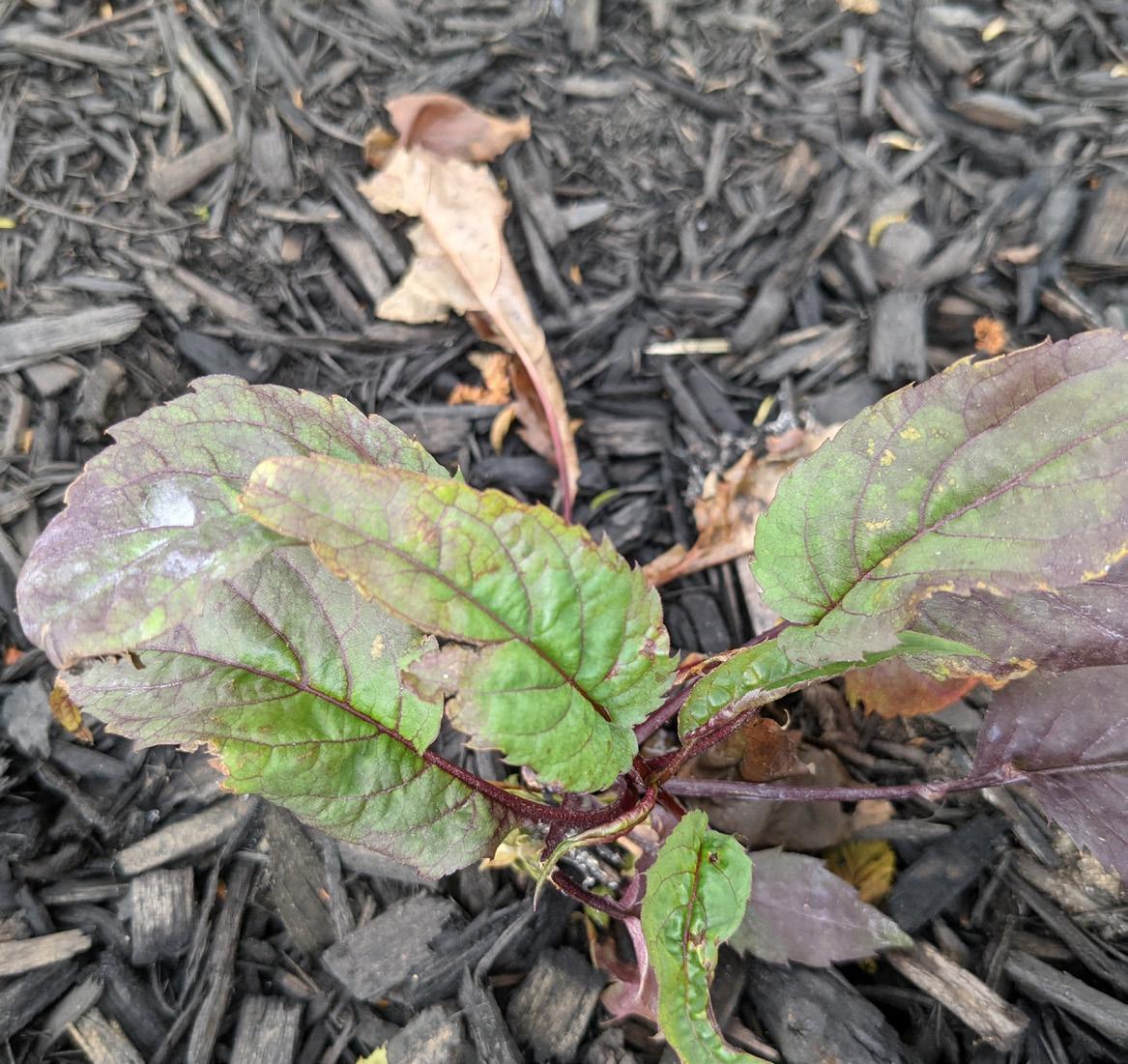
23
Asteraceae
Photo: Thomas Muller
Wild Geranium
Geranium maculatum
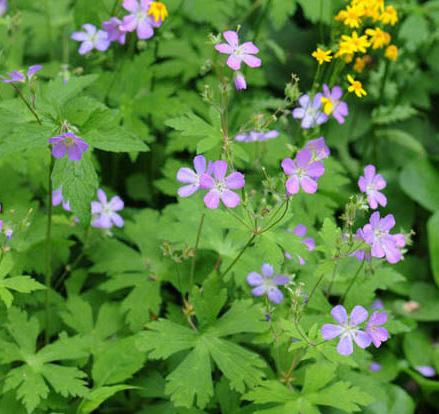
Plant Information
• Leaves “clover” like in appearance
• Leaves lobed and irregular
• First leaves of spring often have long stalks
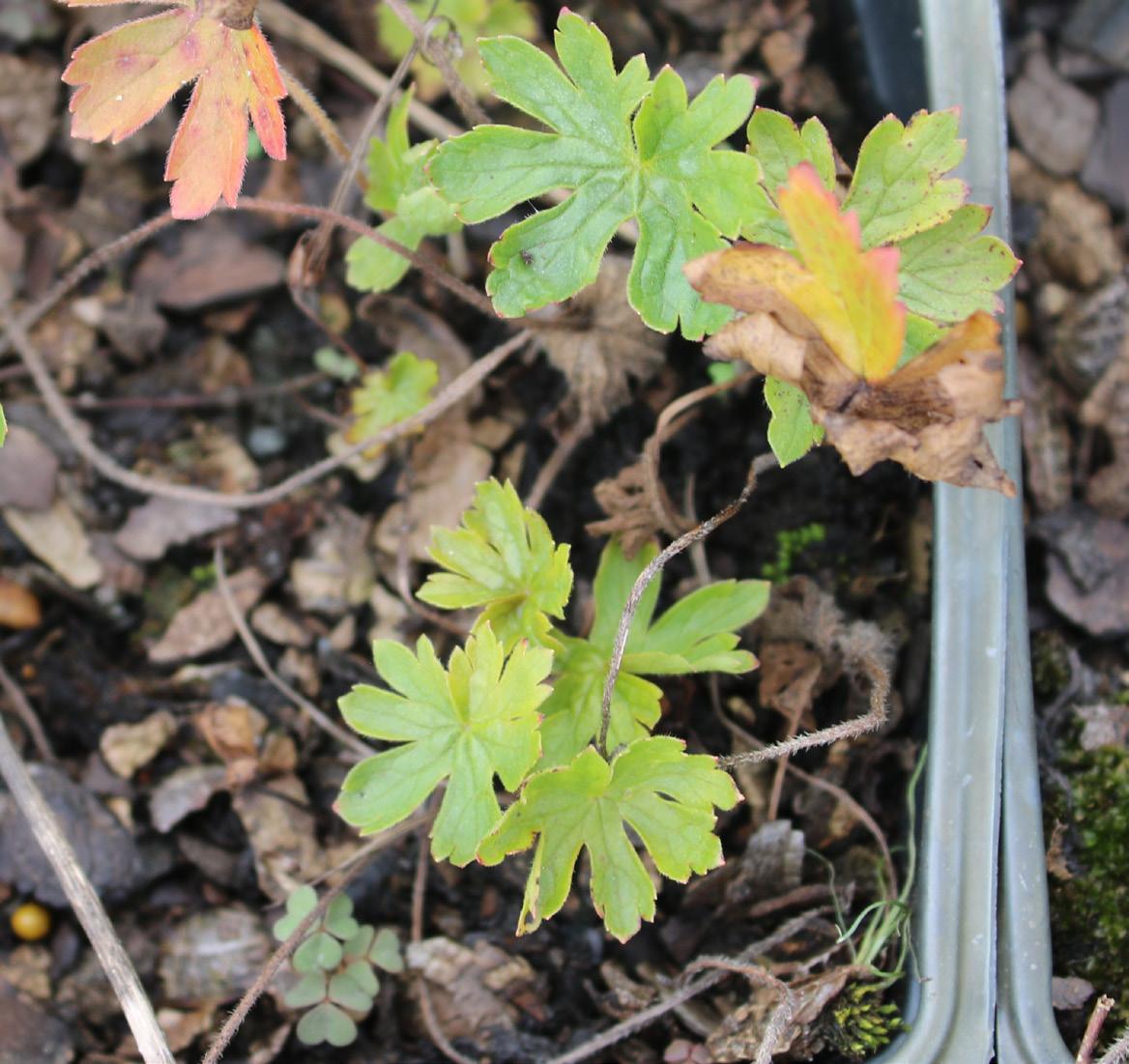
Geraniaceae
Garden Specs
24
X
Photo: James Reveal
Helenium autumnale
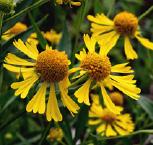
Plant Information
• Lance-shaped leaves
• Leaves extend down stem like wings
Garden Specs
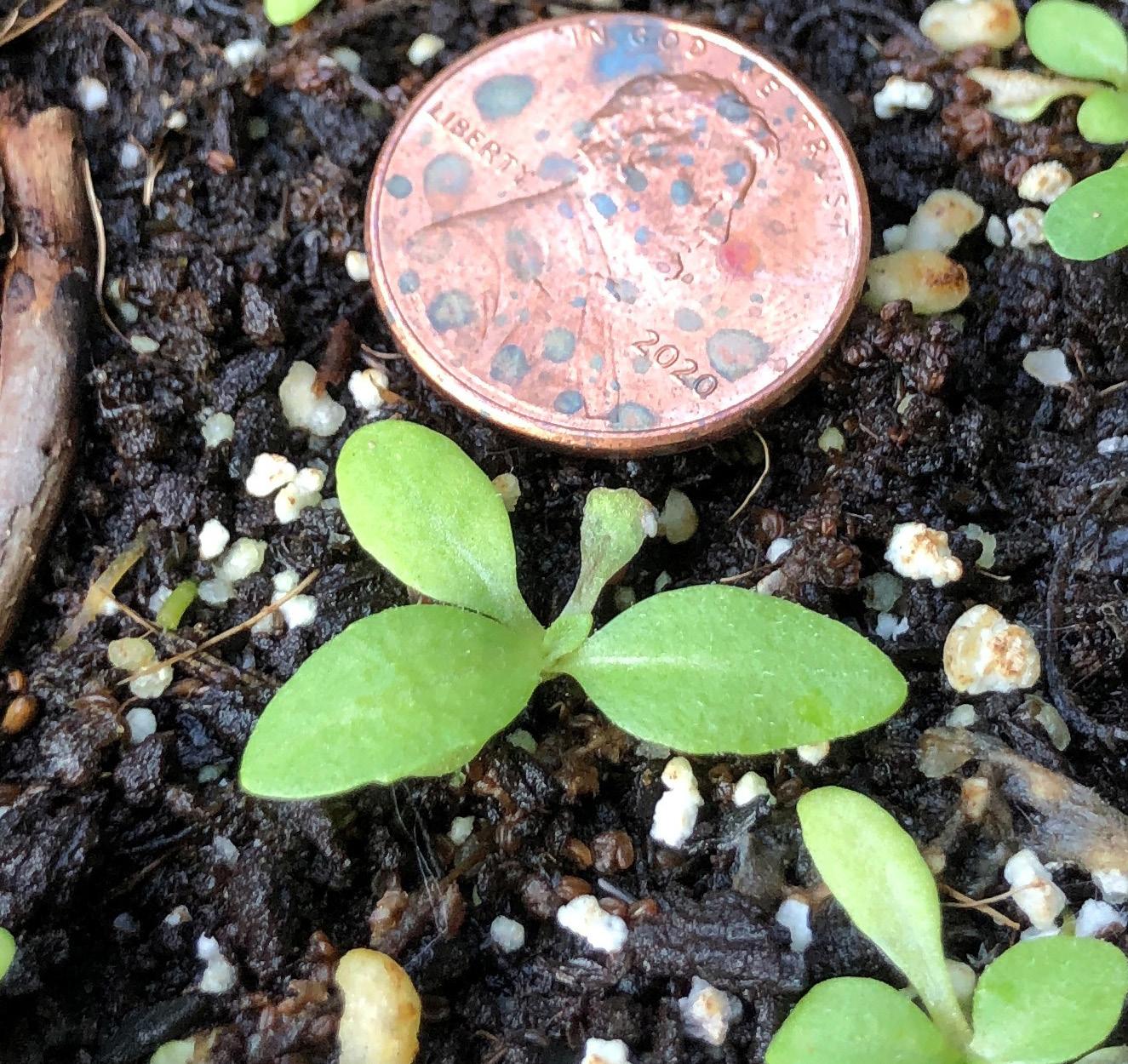
25
Autumn Sneezeweed
Asteraceae
Photo by R. W. Smith
Photo by: R. Parker, Finger Lakes Native Plant Society
Swamp Sunflower
Helianthus angustifolius
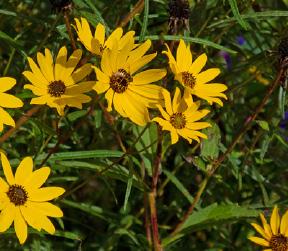
Plant Information
• Coarse hairs on lower stem and leaves
• Leaves very thin and stiff
• Lower leaves opposite
Garden Specs
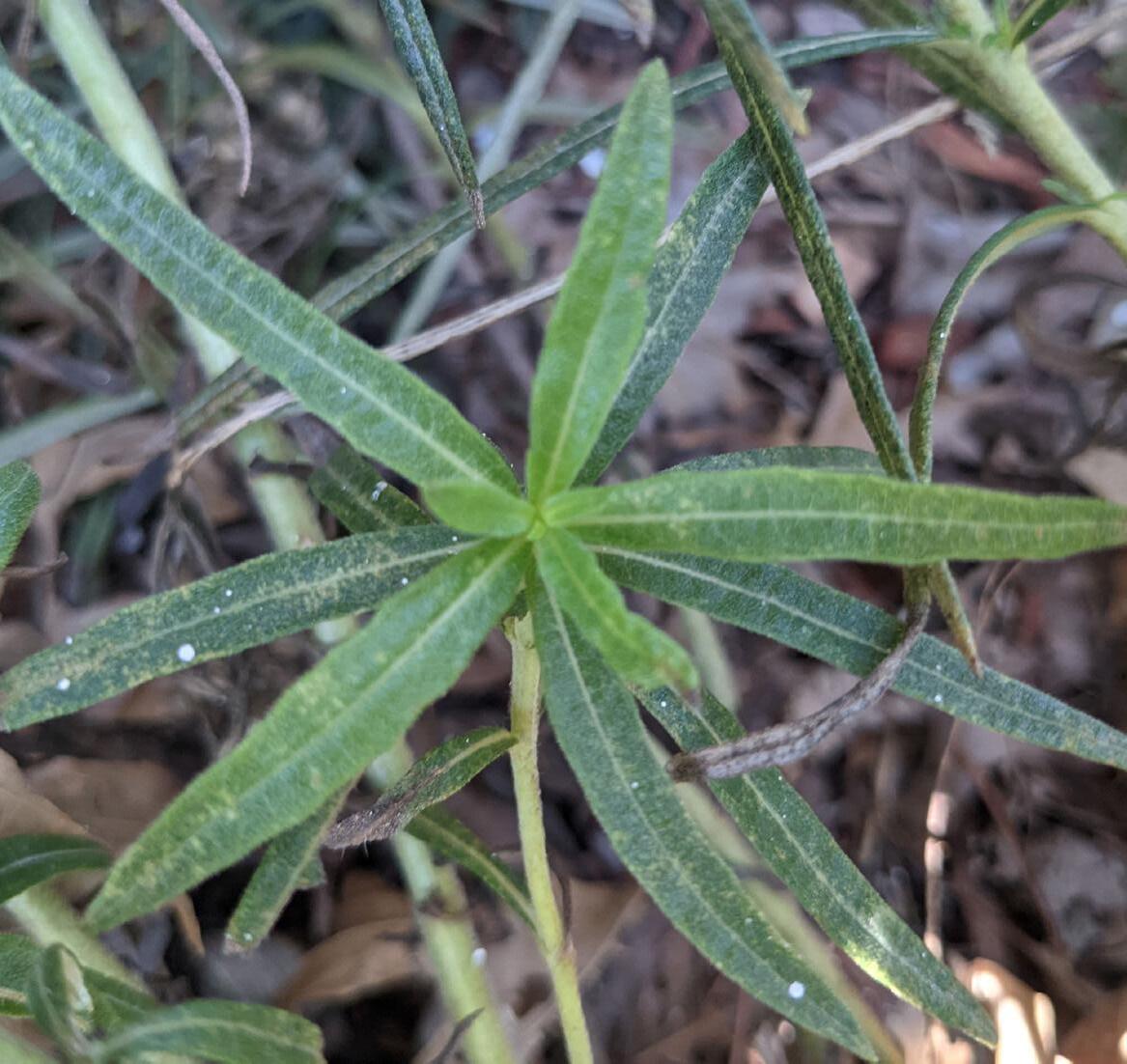
26
Asteraceae
Photo by Stephanie Brundage
Oxyeye Sunflower
Heliopsis helianthoides
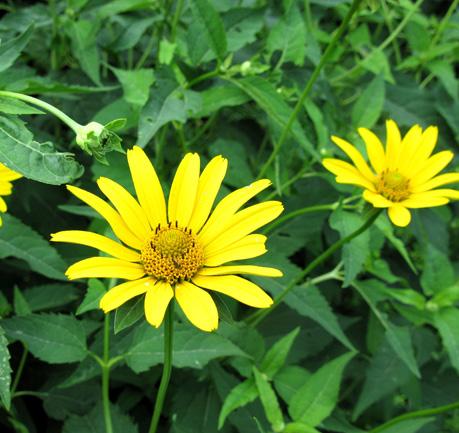
Plant Information
• Slightly triangular leaves
• Clump forming
• Leaves are opposite each other on stem

Asteraceae
Garden Specs
27
Photo: Thomas Muller
Swamp Rose-Mallow
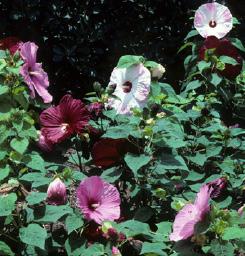
Hibiscus moscheutos
Plant Information

• Green heart shaped leaves that are hairy and white underneath
• Central stem smooth
• Leaf undersides white in color
Malvaceae
Garden Specs
28
Photo by Sally and Andy Wasowski
Blue Flag Iris
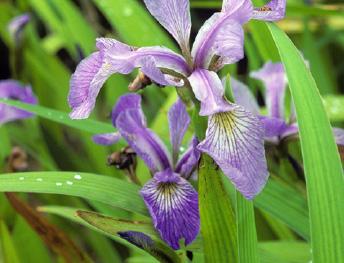
Plant Information
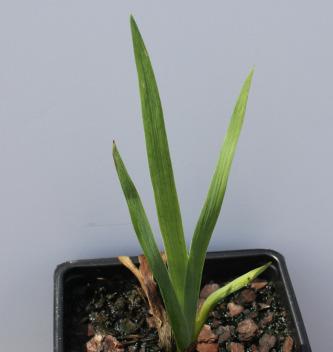
• Long slender leaves, sword like
• Stem is like other leaves, not obvious
• Leaves very flat
Garden Specs
29
Iris versicolor Iridaceae
Photo by Sally and Andy Wasowski
Itea
Plant Information
• Mound-shaped shrub with slender branches

• Alternate, elliptical dark green leaves that turn red in the fall
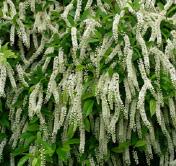
Garden Specs
30
Virginia Sweetspire
virginica Iteaceae
Photo by Eric Bakers
Soft Rush
Juncus effusus
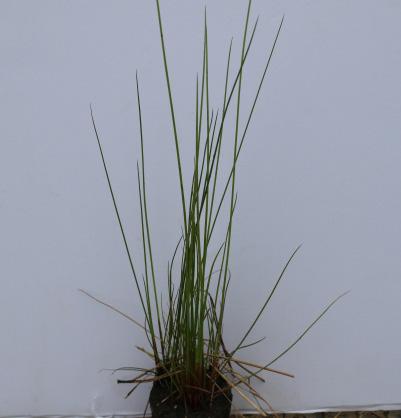
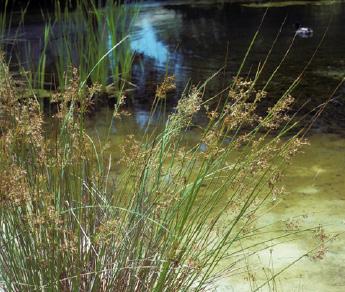
Plant Information
• Soft, grass-like stems in clumps
• Stems round
• Flowers non-distinct
Garden Specs
31
Juncaceae
Photo by Sally and Andy Wasowski
Spike Gayfeather
Liatris spicata
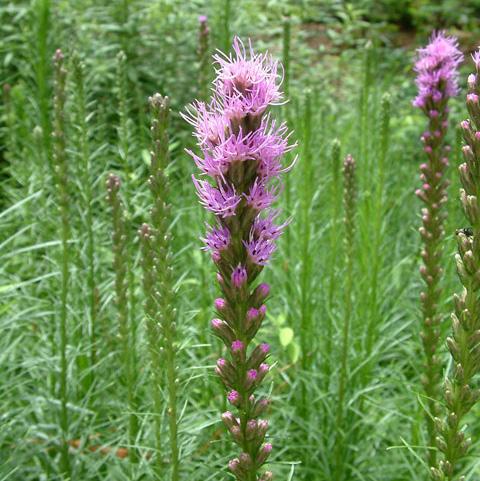
Plant Information
• Very thin leaves, leaves at base sometimes wider
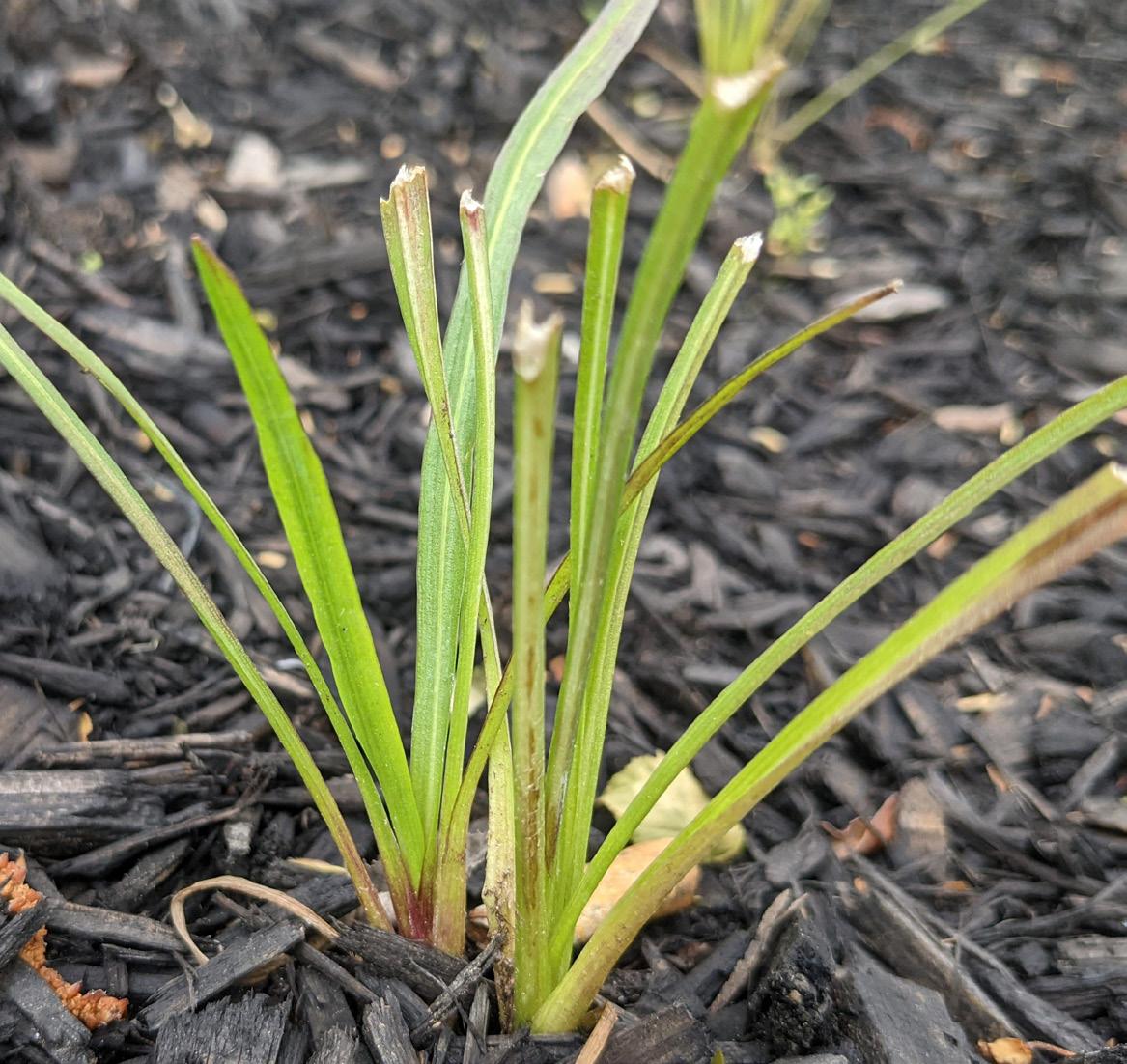
• Clump forming
• Creates clear “spikes” as it grows
Asteraceae
Garden Specs
32
Photo: Stefan Bloodworth
Spicebush
Lindera benzoin

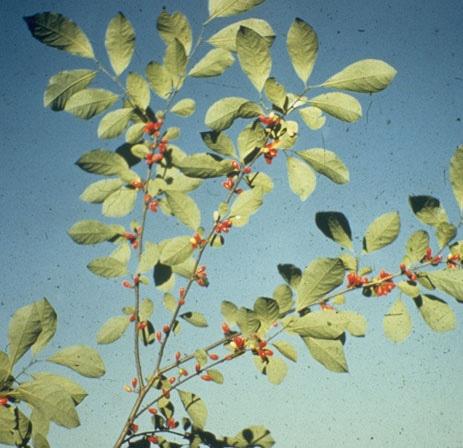
Plant Information
• Slender olive-green, brown shrub twigs
• Alternate, smooth leaves with a spicy aroma
• Leaves oval shaped
Lauraceae
Garden Specs
33
Photo by Albert F. W. Vick
Cardinal Flower

Lobelia cardinalis
Plant Information
• Lower part of stem has lance-shaped toothed leaves

• Basal rosette remains over winter
Campanulaceae
Garden Specs
34
Photo by Alan Cressler
Great Blue Lobelia

Lobelia siphilitica
Plant Information
• Stiff, unbranched, leafy stalks
• Light green lance-like toothed leaves
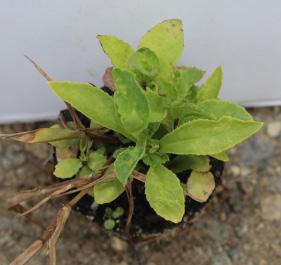
• Basal rosette remains over winter
Campanulaceae
Garden Specs
35
Photo by Julie Makin
Virginia Bluebells

Mertensia virginica

Plant Information
• Large egg shaped leaves,
• Leaves create a continuous line with the mainstem
Garden Specs
36
Boraginaceae
Photo: Thomas Muller
Scarlet Beebalm

Monarda didyma ‘Jacob Cline’
Plant Information
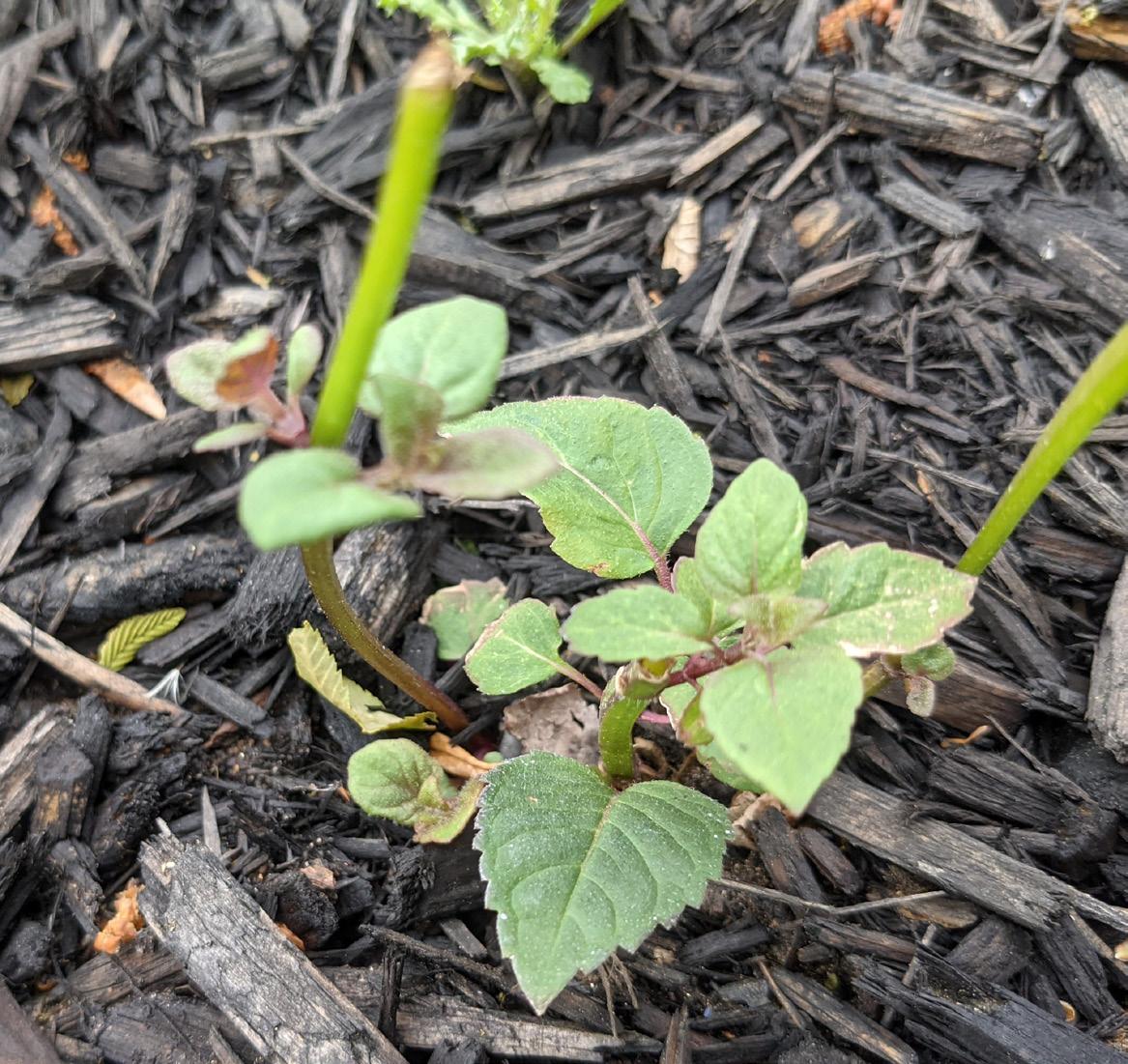
• Leaves have minty fragrance
• Square stem
• Hummingbird favorite
Lamiaceae
Garden Specs
37
Photo: Stephanie Brundage
Lavender Bee Balm
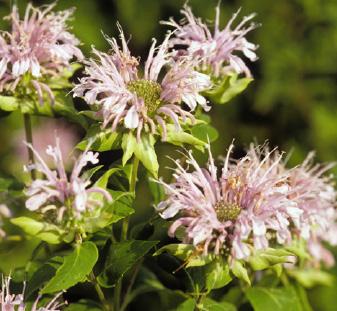
Monarda fistulosa
Plant Information
• Coarse and toothed green leaves that come to a point
• Opposite leaves on a red-brown, hairy stem
• Minty fragrance

Garden Specs
38
Lamiaceae
Photo by Sally and Andy Wasowski
Spotted Bee Balm
Monarda punctata
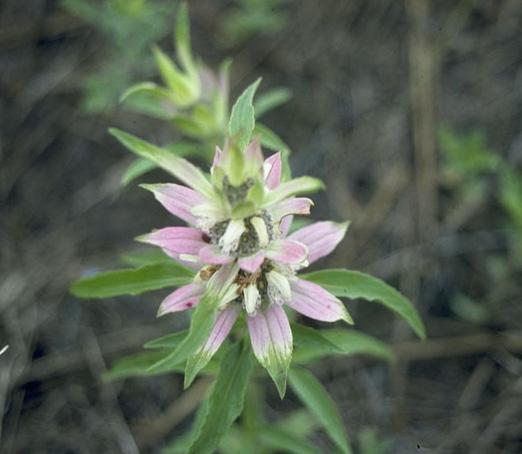
Plant Information
• Opposite, lance-like leaves with a pointed tip; hairy stem
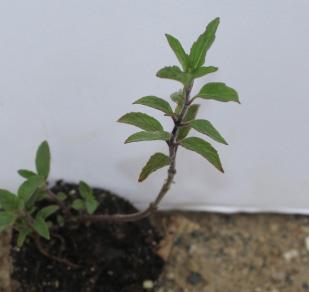
• Underside of leaf is pale and hairy
• Minty fragrance
Garden Specs
39
Lamiaceae
Photo by Norman G. Flaigg
Fall Obedient Plant
Physostegia virginiana
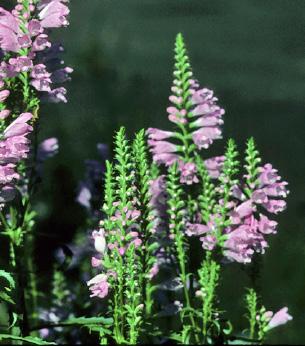

Plant Information
• Lance-ellpitic shaped leaves with teeth and pointed tips
• Square, hairless stems that swell at leaf nodes
Garden Specs
40
Lamiaceae
Photo by Sally and andy Wasowski
Woodland Phlox

Phlox divaricata ‘Blue Moon’
Plant Information
• Stem lay across the ground before flowering
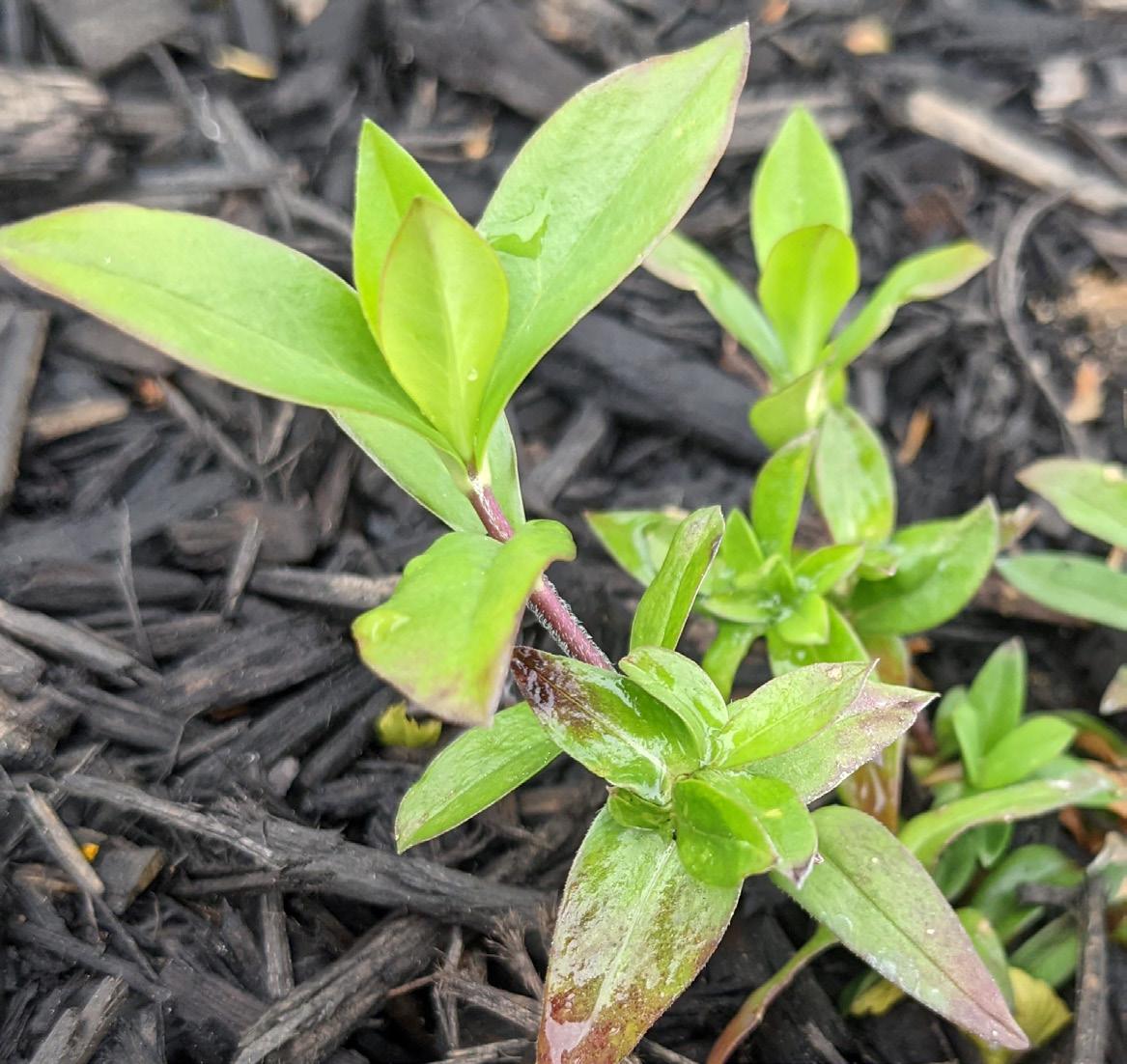
• Leaf shape variable
• Upper stem hairy
• Semi-evergreen
Polemoniaceae
Garden Specs
41
Photo: Albert Vick
Creeping Phlox
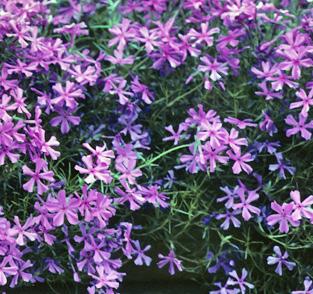
Phlox subulata

Plant Information
• Stays low to the ground all year
• Small leaves, eggshaped
• Upper stem hairy
• Flowers come in many colors
Garden Specs
42
Polemoniaceae
X
Photo: Sally & Alan Wasowski
Pickerelweed

Pontederia cordata

Plant Information
• Long, heart-shaped glossy green leaves
• Parallel veins in leaves
• Leaves with very long stalks
Garden Specs
43
Pontederiaceae
Photo by Harry Cliffe
Clustered Mountain Mint
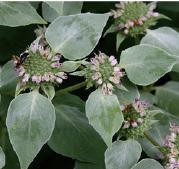
Pycnanthemum muticum
Plant Information
• Oval-toothed leaves
• Leaves have minty fragrance
• Strong square stems
• Older leaves gray in color, young leaves bright green

Lamiaceae
Garden Specs
44
Photo by R. W. Smith
Black-Eyed Susan
Rudbeckia hirta


Plant Information
• Oval-shaped leaves covered with bristly hairs
• Leaves only slightly toothed
Asteraceae
Garden Specs
45
Photo by Sally and Andy Wasowski
Orange Coneflower
Rudbeckia fulgida

Plant Information
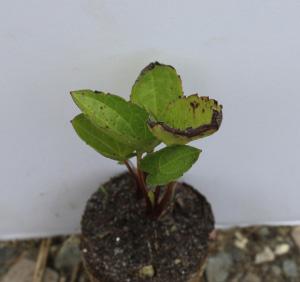
• Multiple stems from root
• Elliptic-shaped leaves with 5 veins
• Leaf surfaces can be smooth or have short hairs
Garden Specs
46
Asteraceae
Photo by W. D. and Dolphina Bransford
Little Bluestem Grass

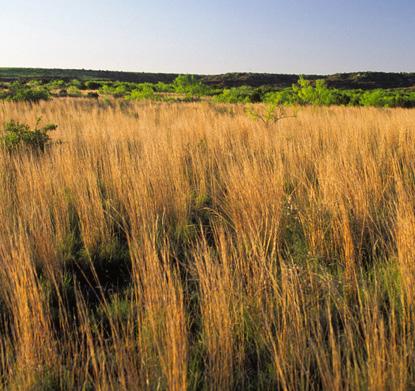
Schizachyrium scoparium
Plant Information
• Grass, generally more blue and brown than green
• Clump forming
Poaceae
Garden Specs
47
Photo: Sally & Alan Wasowski
Photo: David McDermott
Pointed Blue-eyed Grass

Sisyrichium angustifolium

Plant Information
• Likely mistaken for grass
• There are often “wings” off the main stem to distinguish from grass
Iridaceae
Garden Specs
48
X
Photo: Albert Vick
Bluestem Goldenrod
Solidago caesia

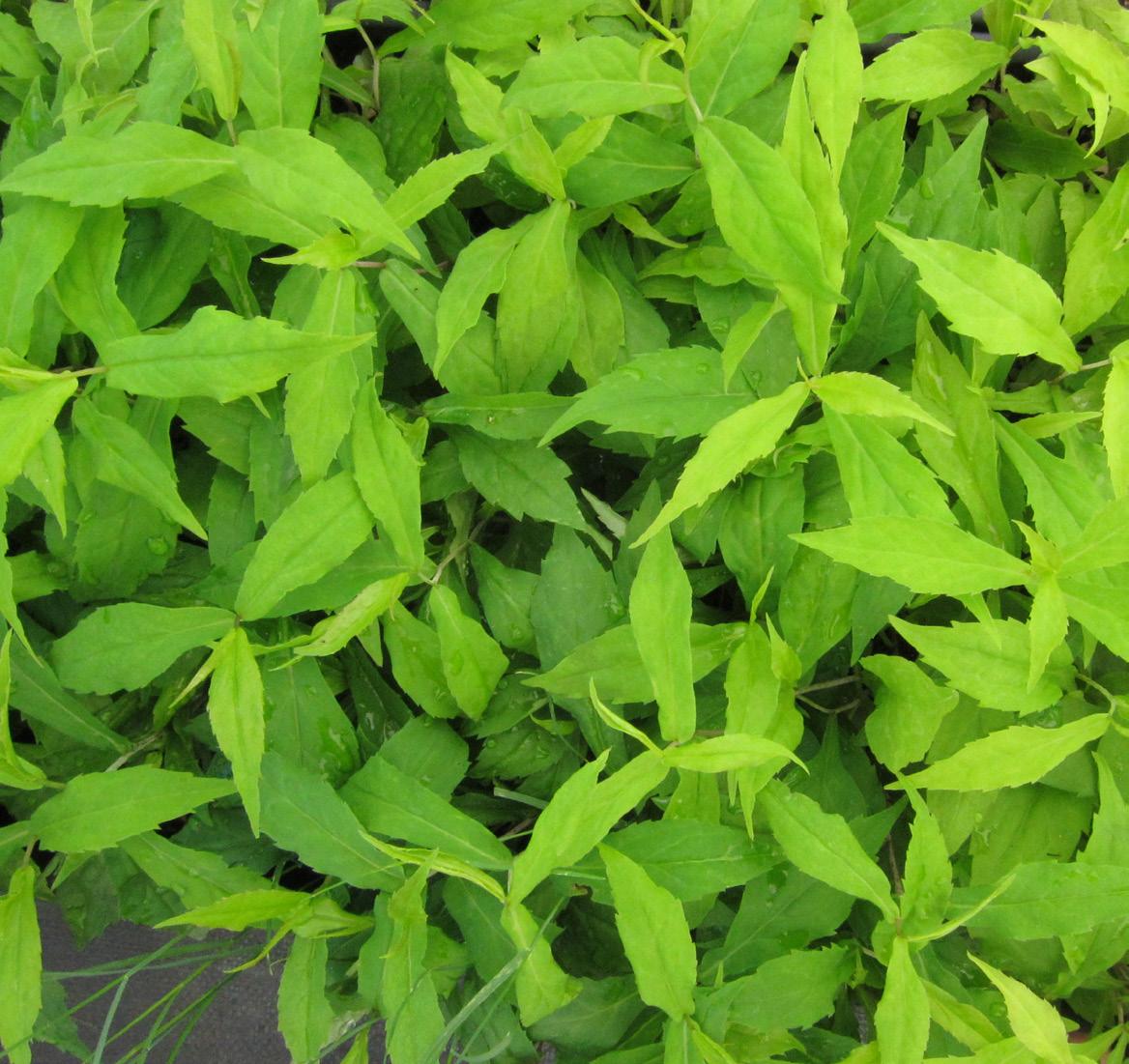
Plant Information
• Mature plant stems have bluish tone
• Long thin leaves
• Leaves toothed
Garden Specs
49
Asteraceae
Photo by R. W. Smith
Photo: R. Parker, Fingler Lakes Native Plant Society
Gray Goldenrod
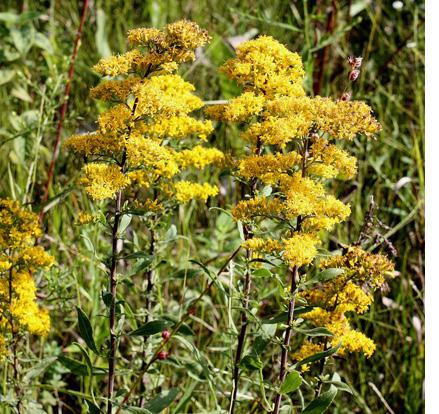
Solidago nemoralis
Plant Information
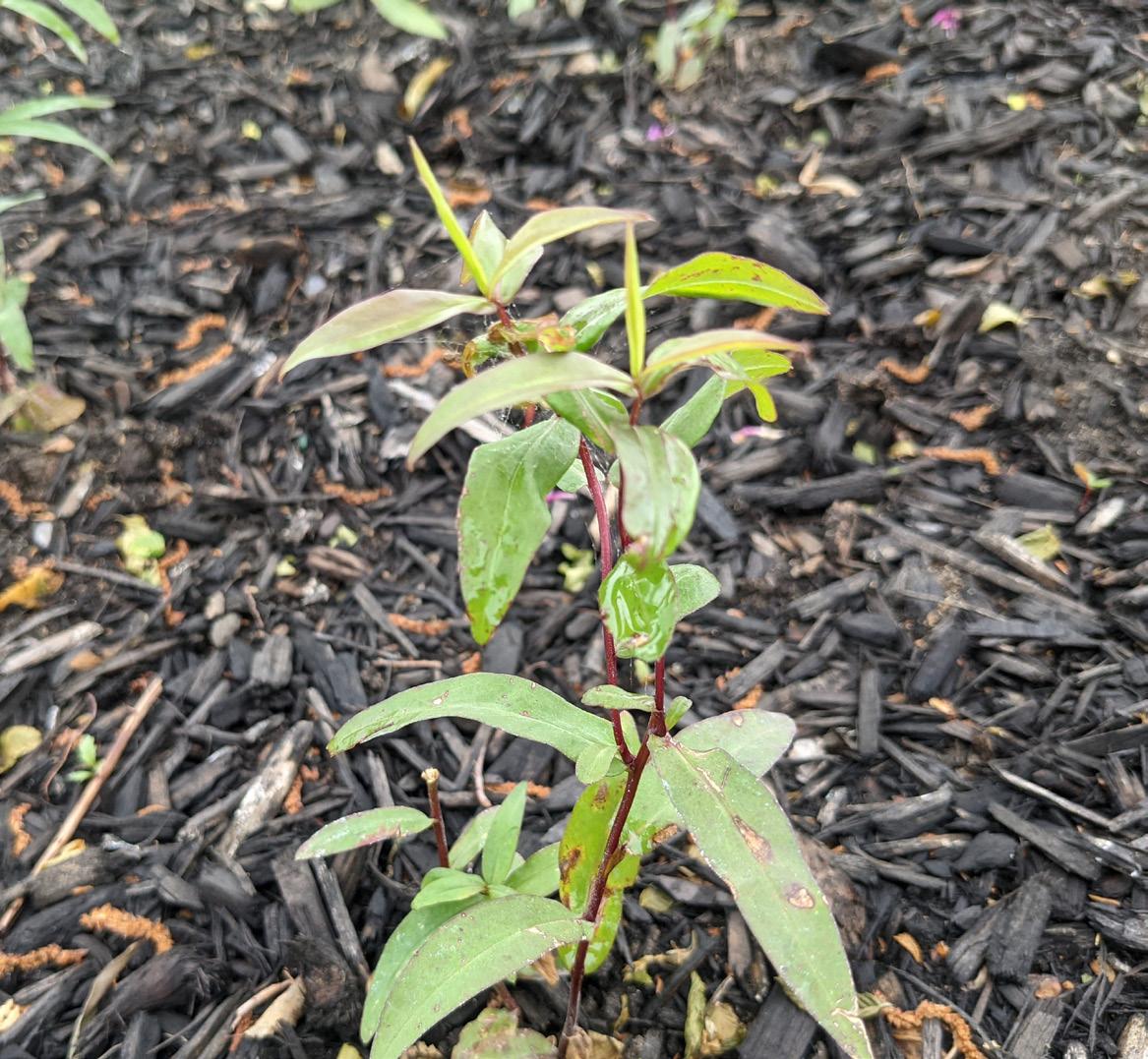
• Leaves bluntly toothed
• Leaves & stems graying with fine hairs
• Leaves taper to the base
Garden Specs
50
Asteraceae
Photo: R.W. Smith
Sweet Goldenrod
Solidago odora

Plant Information

• Anise scented leaves when crushed
• Leaves not toothed, narrow
• Delaware state herb
Garden Specs
51
Asteraceae
Photo: W.D. & Dolphia Bransford
Thin Hairy Rough-Leaf Goldenrod
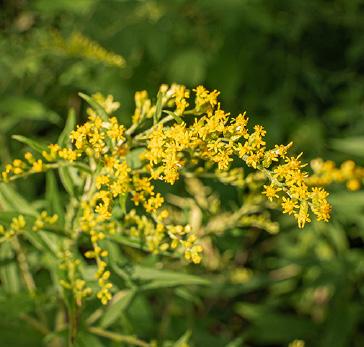
Solidago rugosa
Plant Information

• Narrow-toothed rough leaves
• Tall, hairy stems with arching branches
• Deeply veined leaves
Asteraceae
Garden Specs
52
Photo by Stephanie Brundage
Plant Information
• Lance-shaped leaves clasped around rough stem

• Lower leaves disappear by bloom time
• Stems slender, leaves remain small
Garden Specs
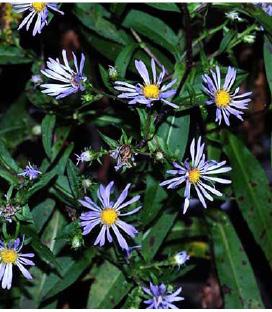
53
New York Aster
Symphotrichium novi-belgii Asteraceae
Photo by James L. Reveal
New England Aster
Symphyotrichum (Aster) novae-angliae
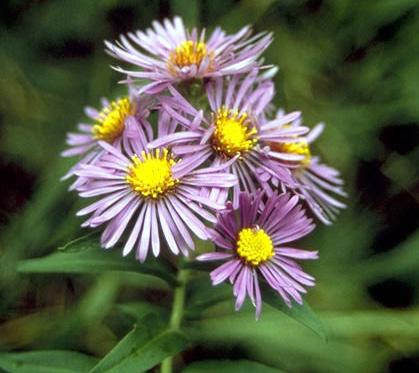
Plant Information
• Hairy stem
• Lance-shaped leaves
clasp around stem

• Stout stem
Asteraceae
Garden Specs
54
Photo by Mariann Watkins
Aster ‘Wood’s Blue’
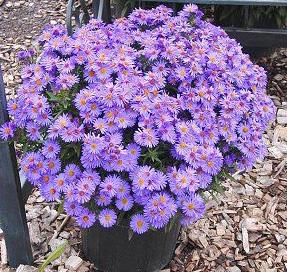
Symphyotrichum sp.
Plant Information
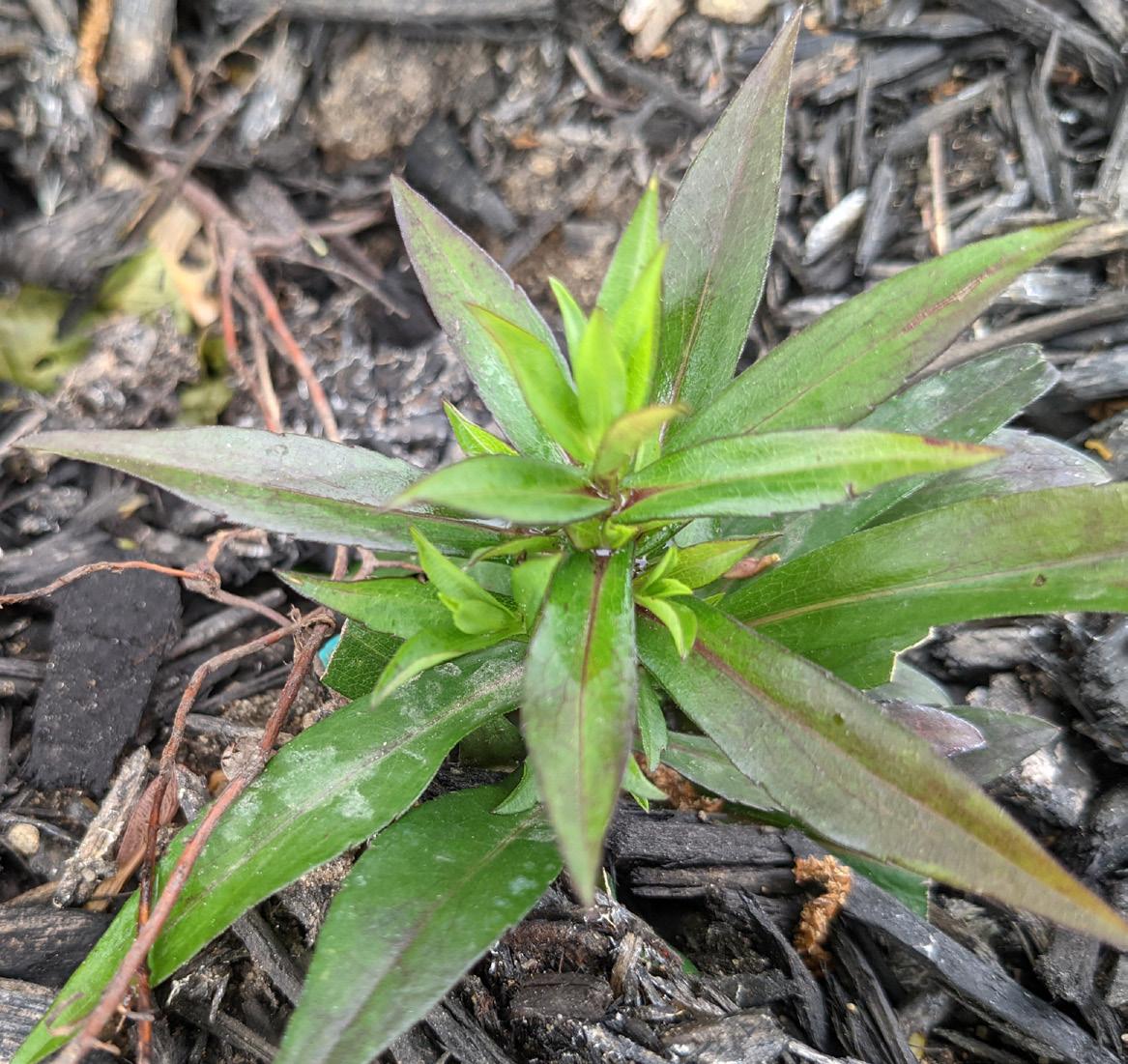
• Lance shaped leaves
• Clumps for most of spring, having rapid growth in fall
• Pollinator favorite
Garden Specs
55
Asteraceae
Photo: North Creek Nurseries
Blue Vervain
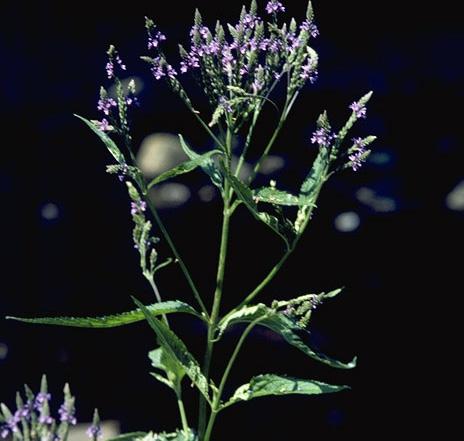
Verbena hastata
Plant Information

• Leaves coarsely toothed, short stalked
• Lower leaves usually have many spikes
Garden Specs
56
Verbenaceae
Photo: W.D. & Dolphia Bransford
New York Ironweed
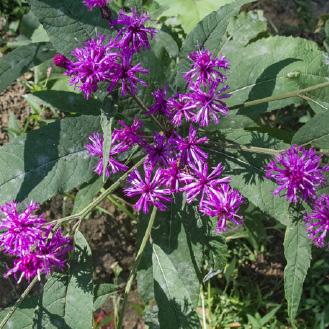
Vernonia noveboracensis
Plant Information
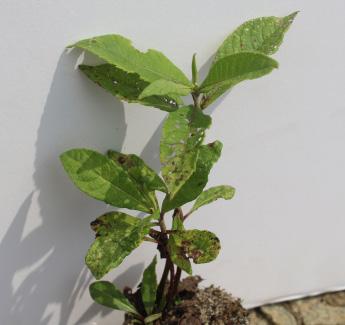
• Deep green lanceshaped leaves
• Serrated 6-8” leaves
• Grows tall quickly in full fun
Asteraceae
Garden Specs
57
Photo by Stephanie Brundage
Golden Alexanders
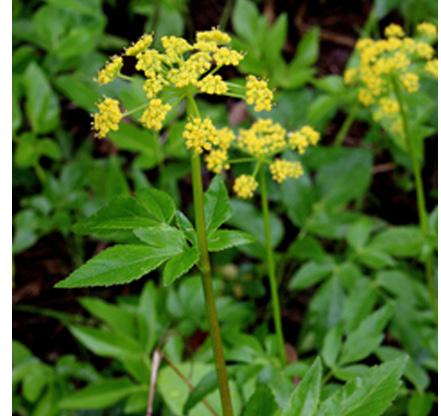

Zizia aurea
Plant Information
• Leave heavily divided into 2-3 “leaflets”
• Leaf shape can vary
• Resembles parsley or carrots
Garden Specs
58
Asteraceae
Photo: R.W. Smith
Photo: Thomas Muller
Additional Resources
Books
Newcombs Wildflower Guide by Lawrence
Newcomb
Bringing Nature Home by Douglas W. Tallamy
The Living Landscape by Rick Drake & Douglas
W. Tallamy
Native Plant Information
Delaware Native Species Commission
Pennsylvania Natural Heritage Program
The Native Plant Society of New Jersey
Native Plant Retailers
Gateway Garden Center, Hockessin, DE
Inland Bays Garden Center, Frankford, DE
Red Bud Native Plant Nursery, Media, PA
Edge of the Woods Native Plant Nursery, Orfield, PA
SummerSweet Native Plants, Mays Landing, NJ
Websites
The Biota of North America Program (Plant Native Ranges)
Delaware Flora Database (Plant Status, Delaware)
Partnership for the Delaware Estuary (More Resources)
Facebook Groups
Delaware Native Plant Identification & Exchange
Pennsylvania Native Plant Society Discussion
Group
Native Plant Gardening in South Jersey
Phone Apps for help with Plant Identification
SEEK
PictureThis
PlantSnap

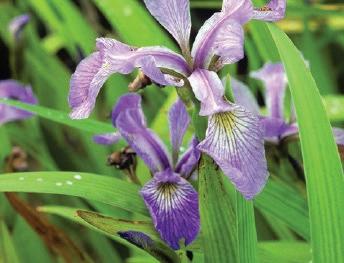
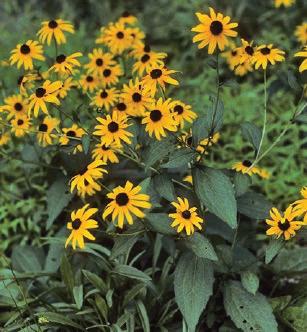
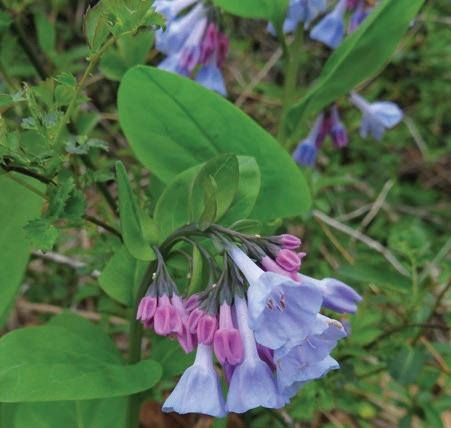

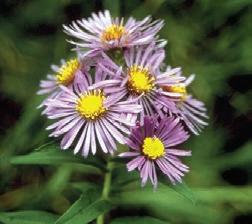
110 South Poplar Street, Suite 202, Wilmington, DE 19801 302-655-4990 • www.DelawareEstuary.org The Partnership for the Delaware Estuary, host of the Delaware Estuary Program, leads collaborative, science–based efforts to improve the Delaware River and Bay, which covers portions of Delaware, New Jersey, and Pennsylvania. Printed on recycled paper Help Support PDE, visit www.delawareestuary.org/donate
































































































































